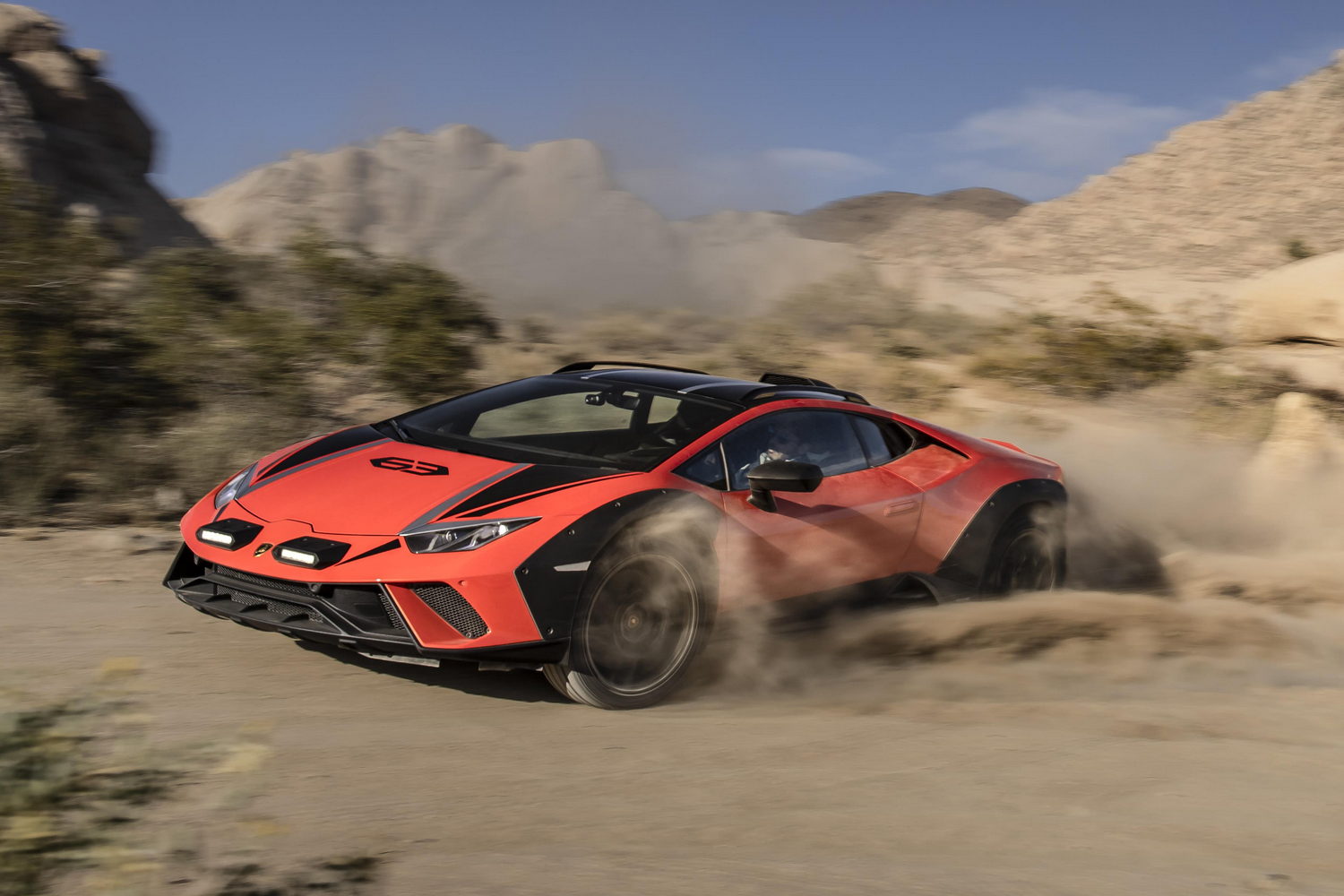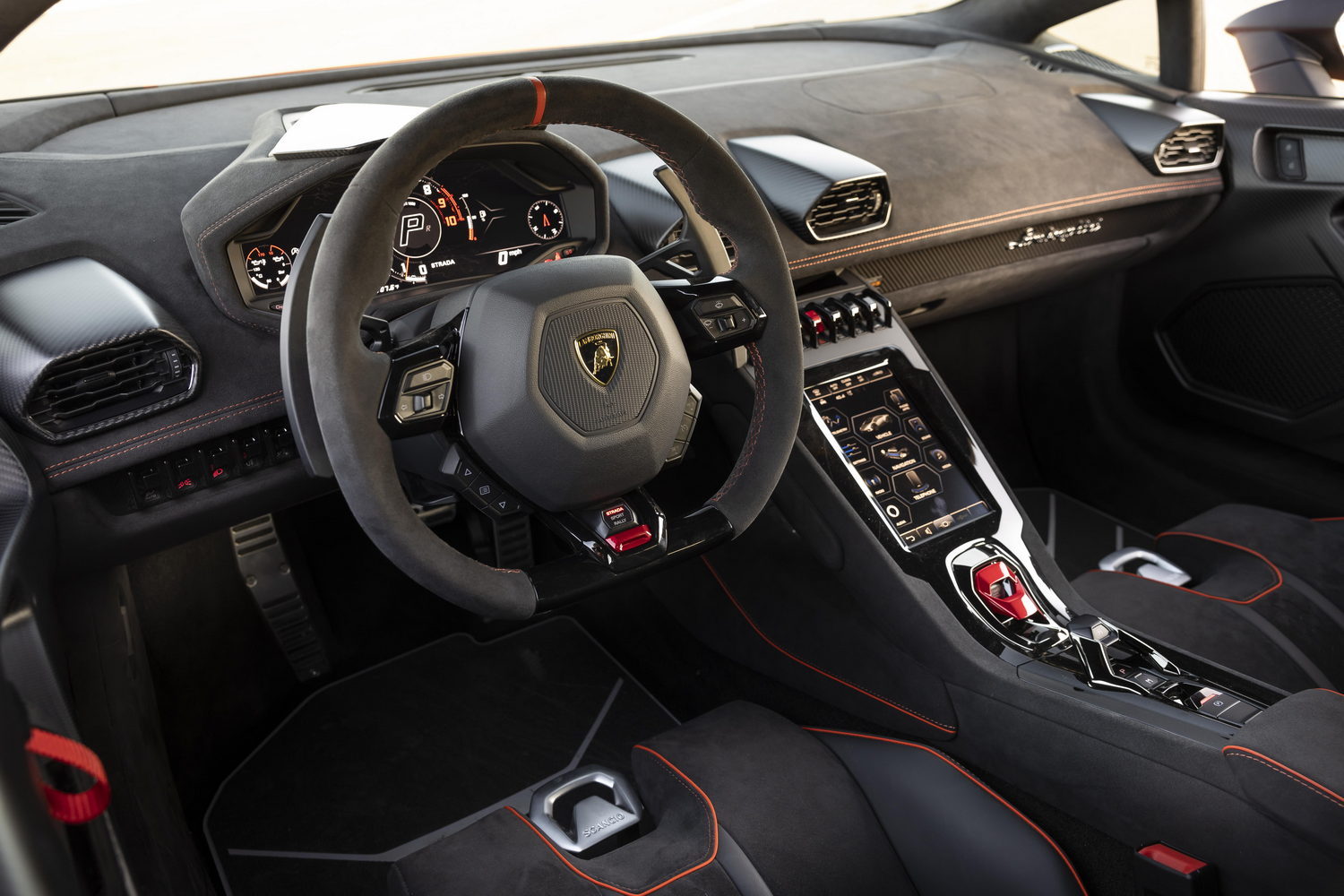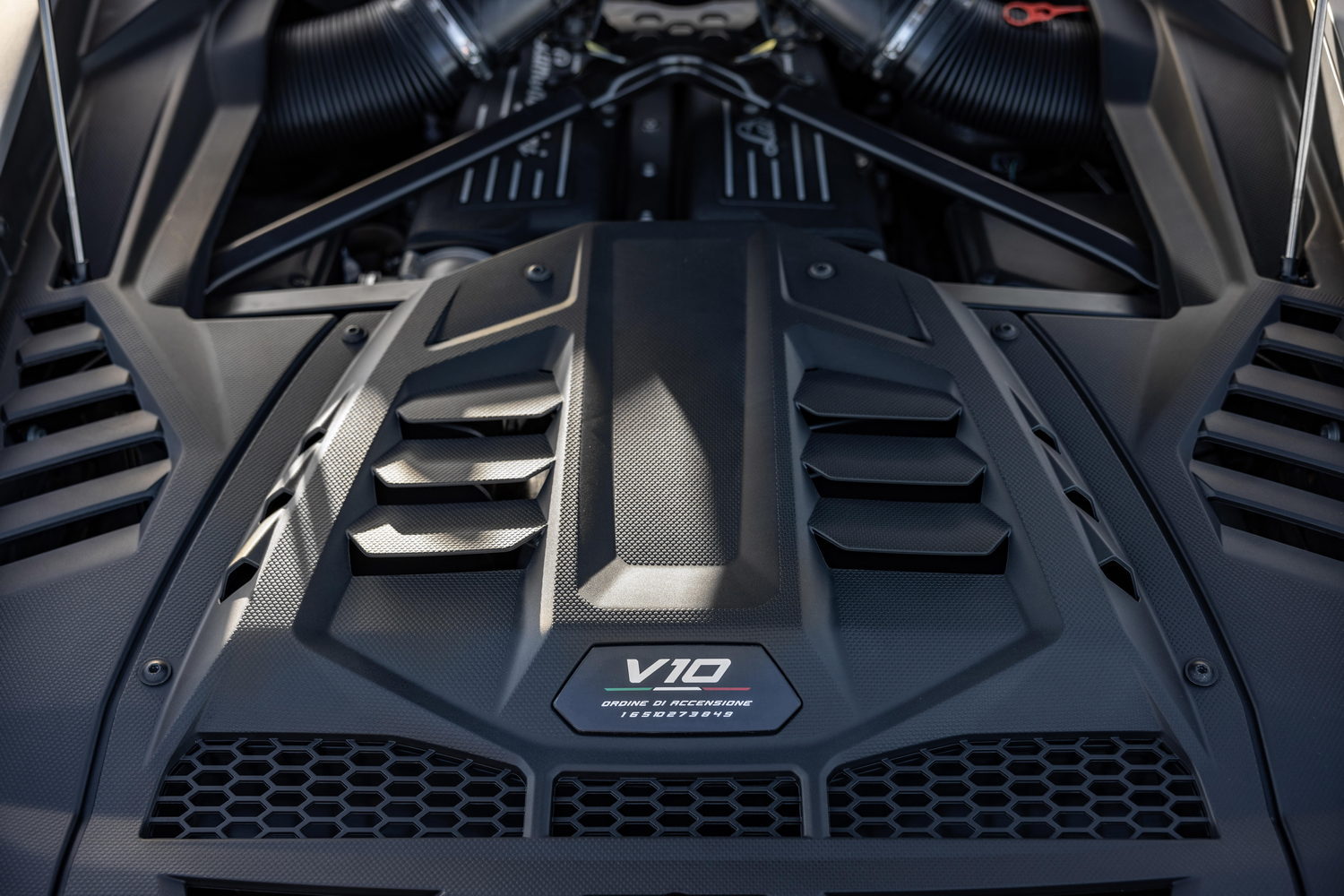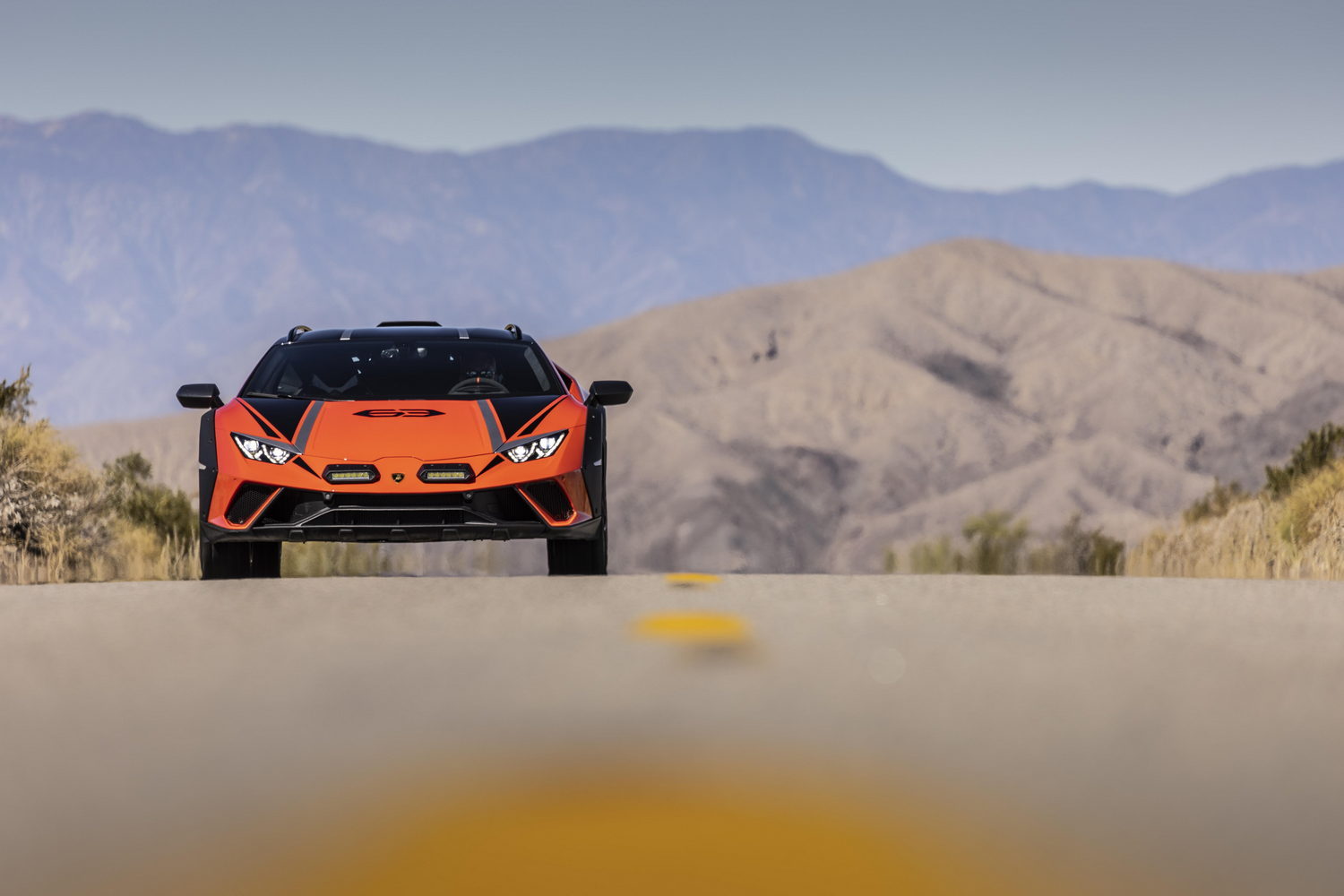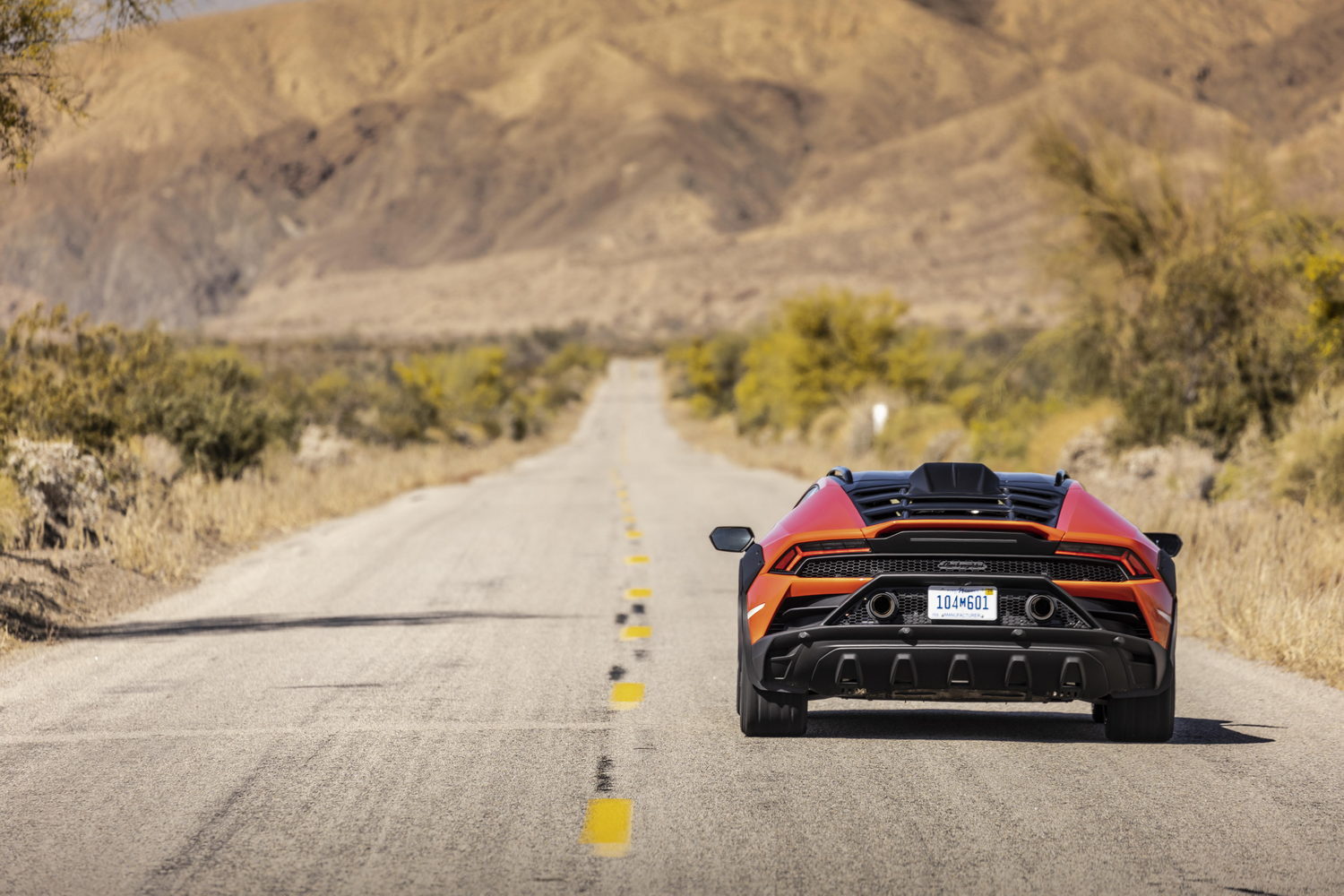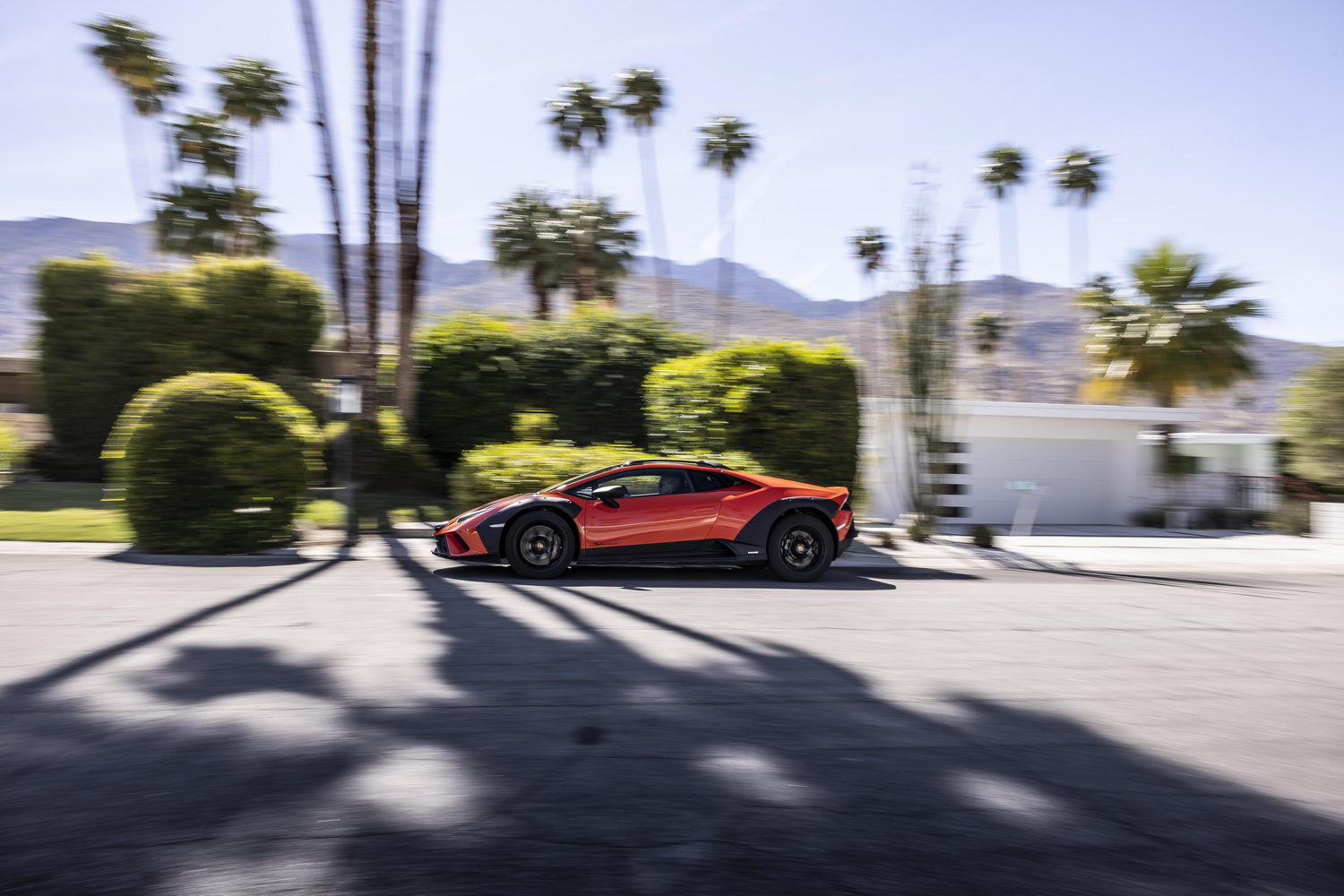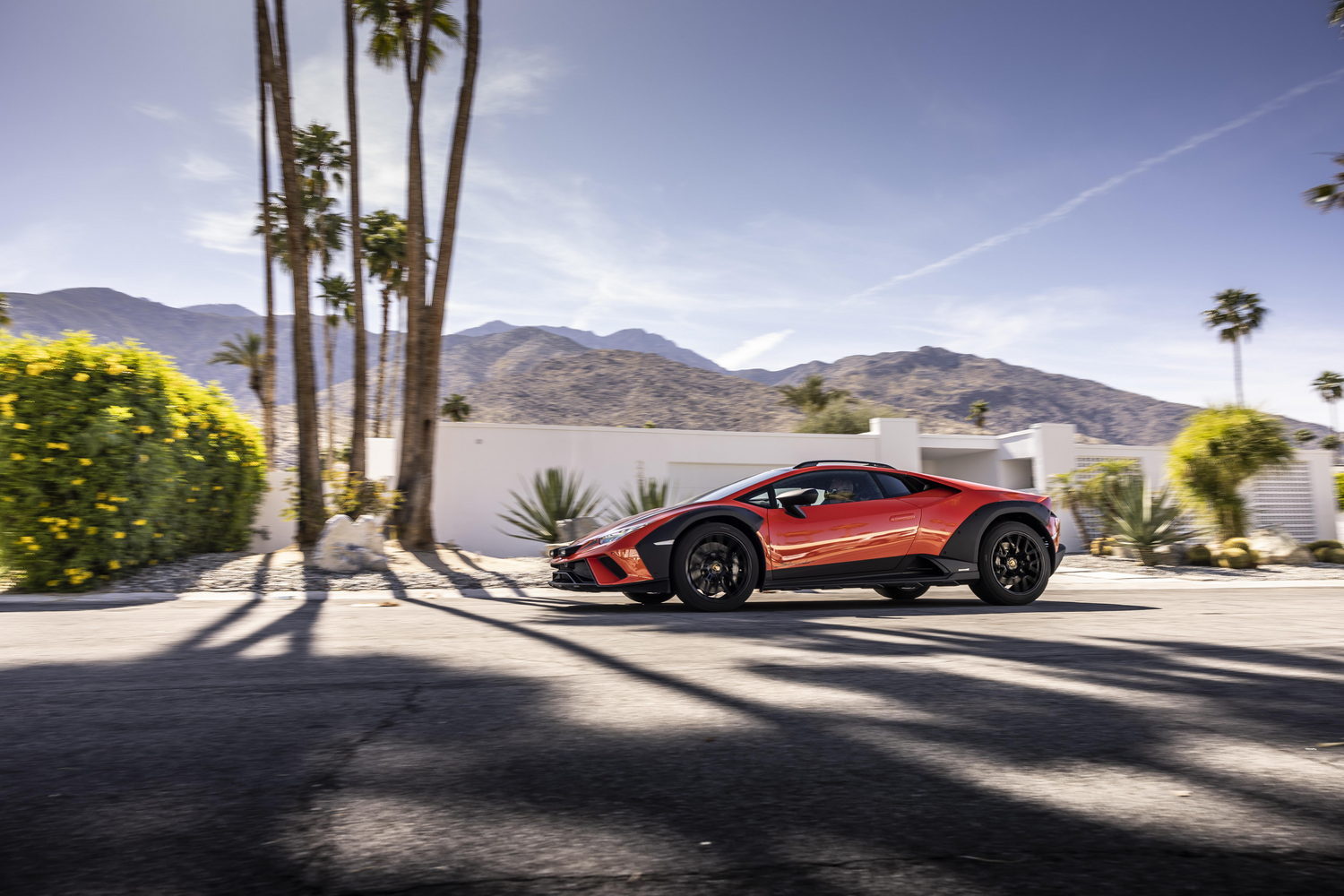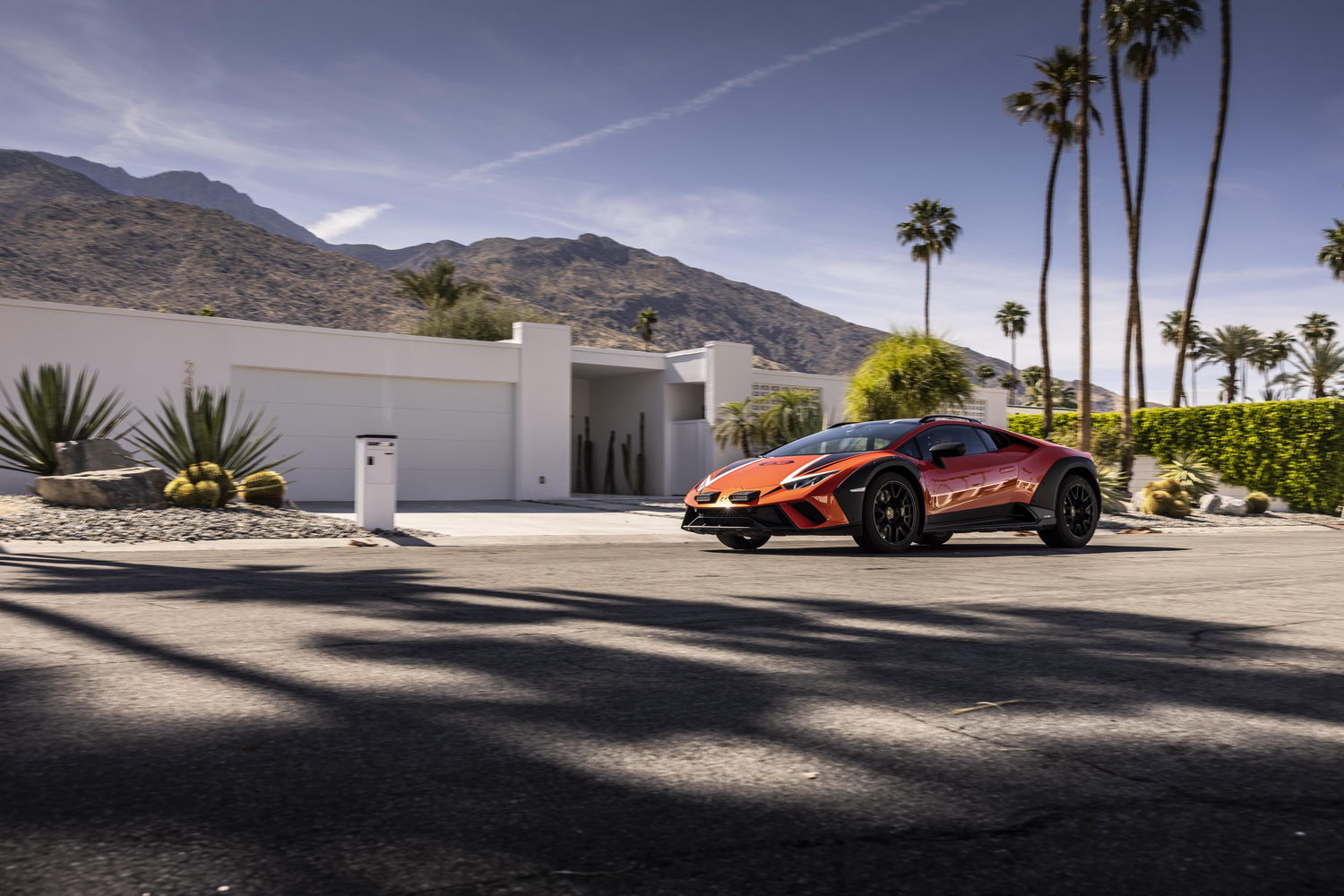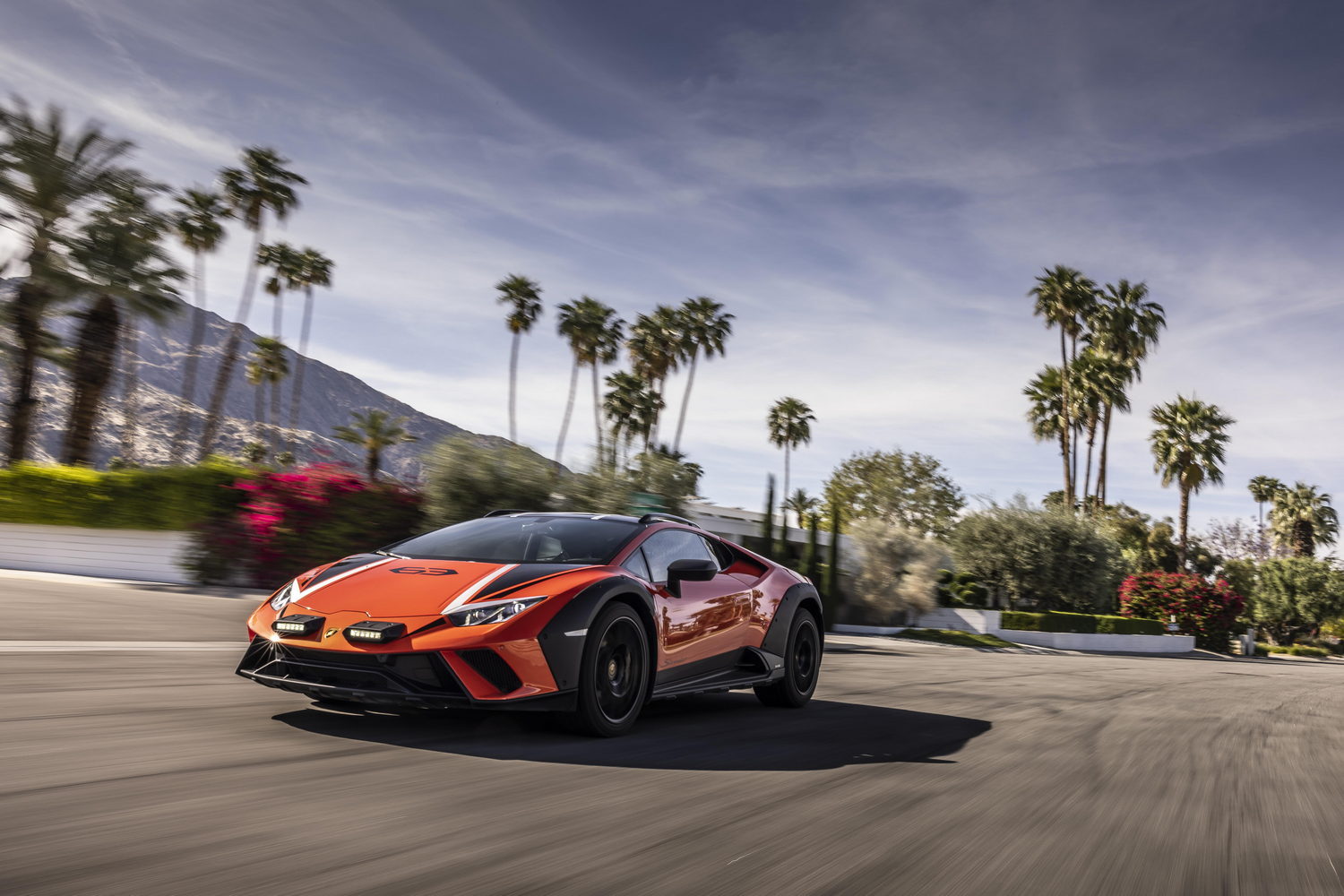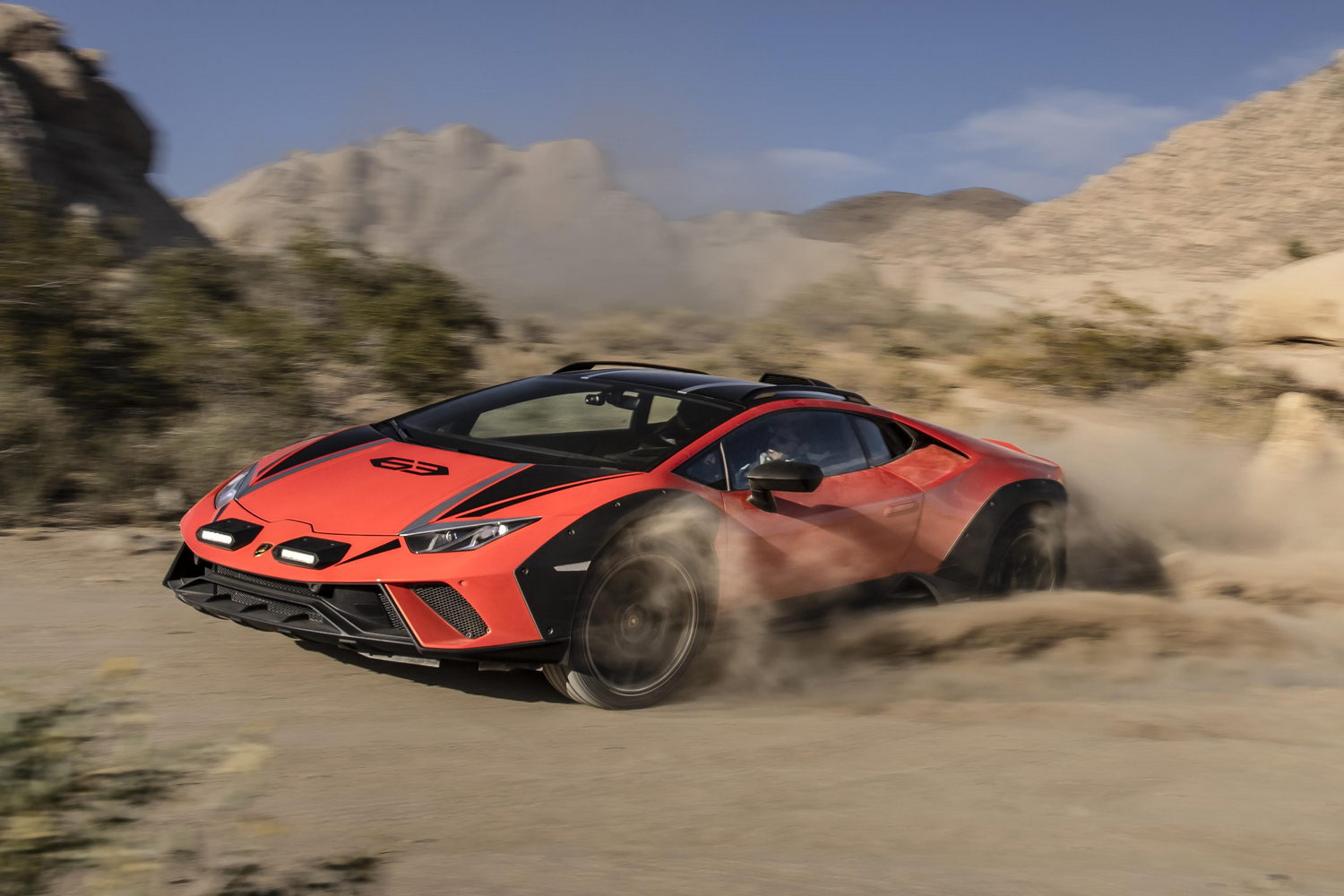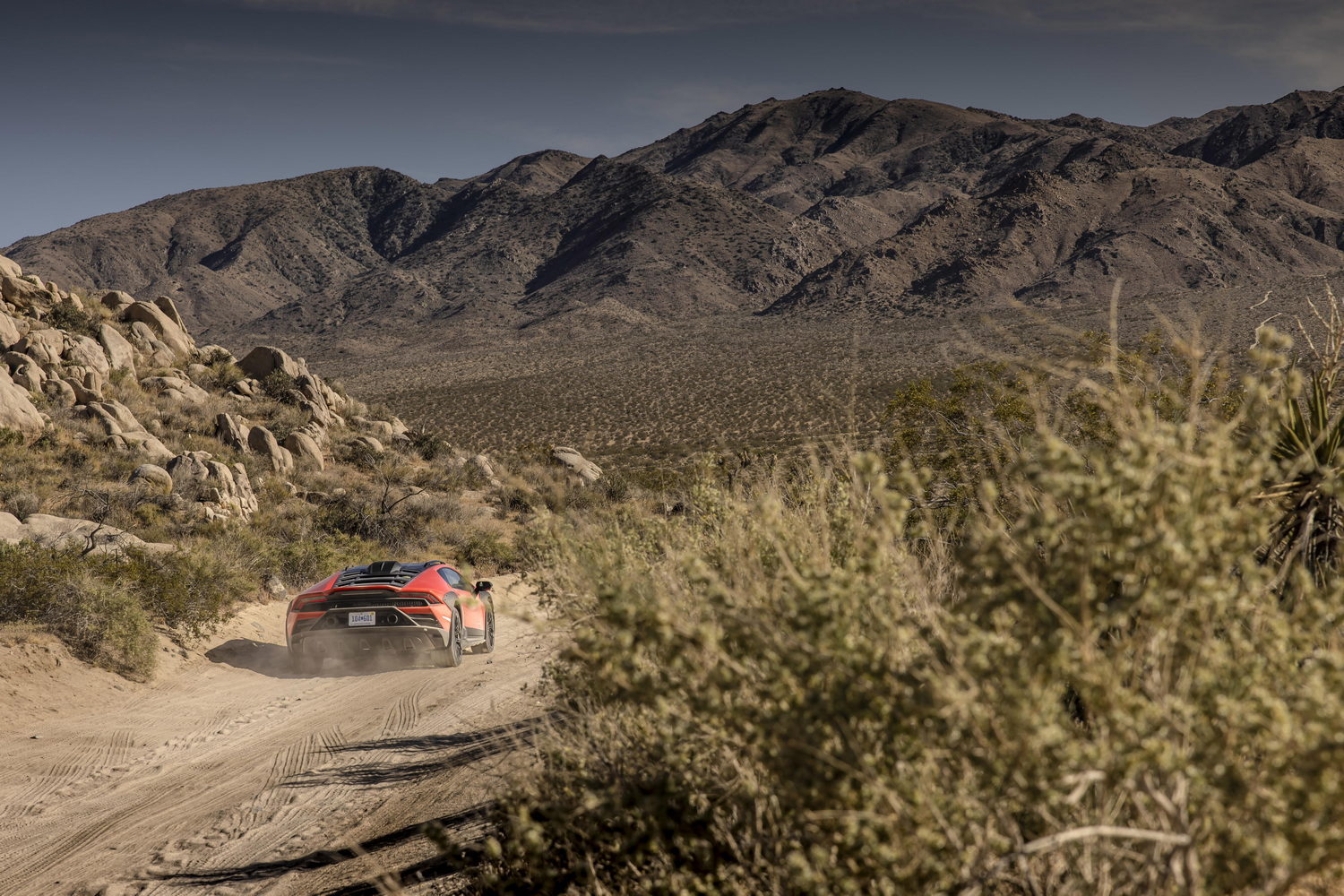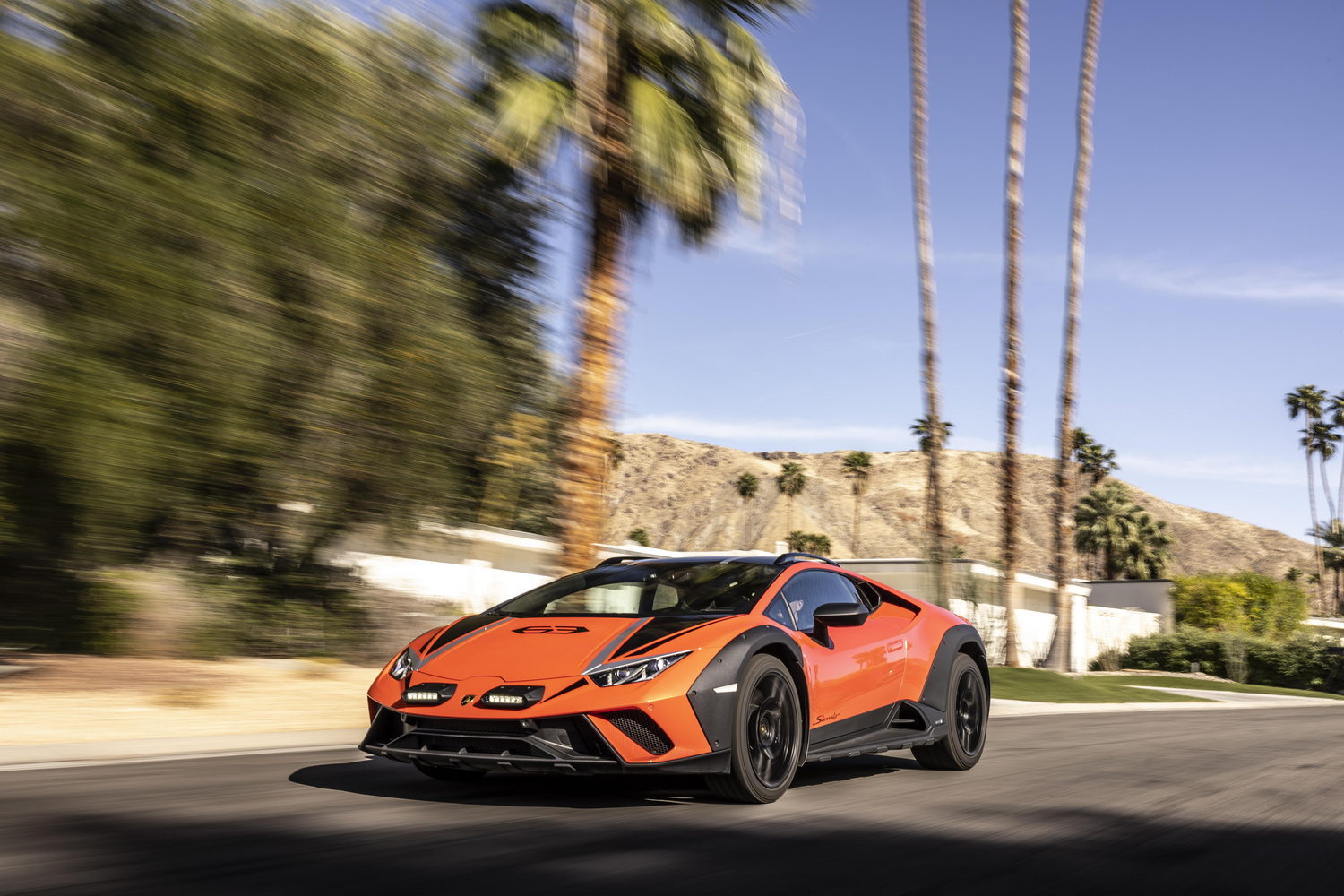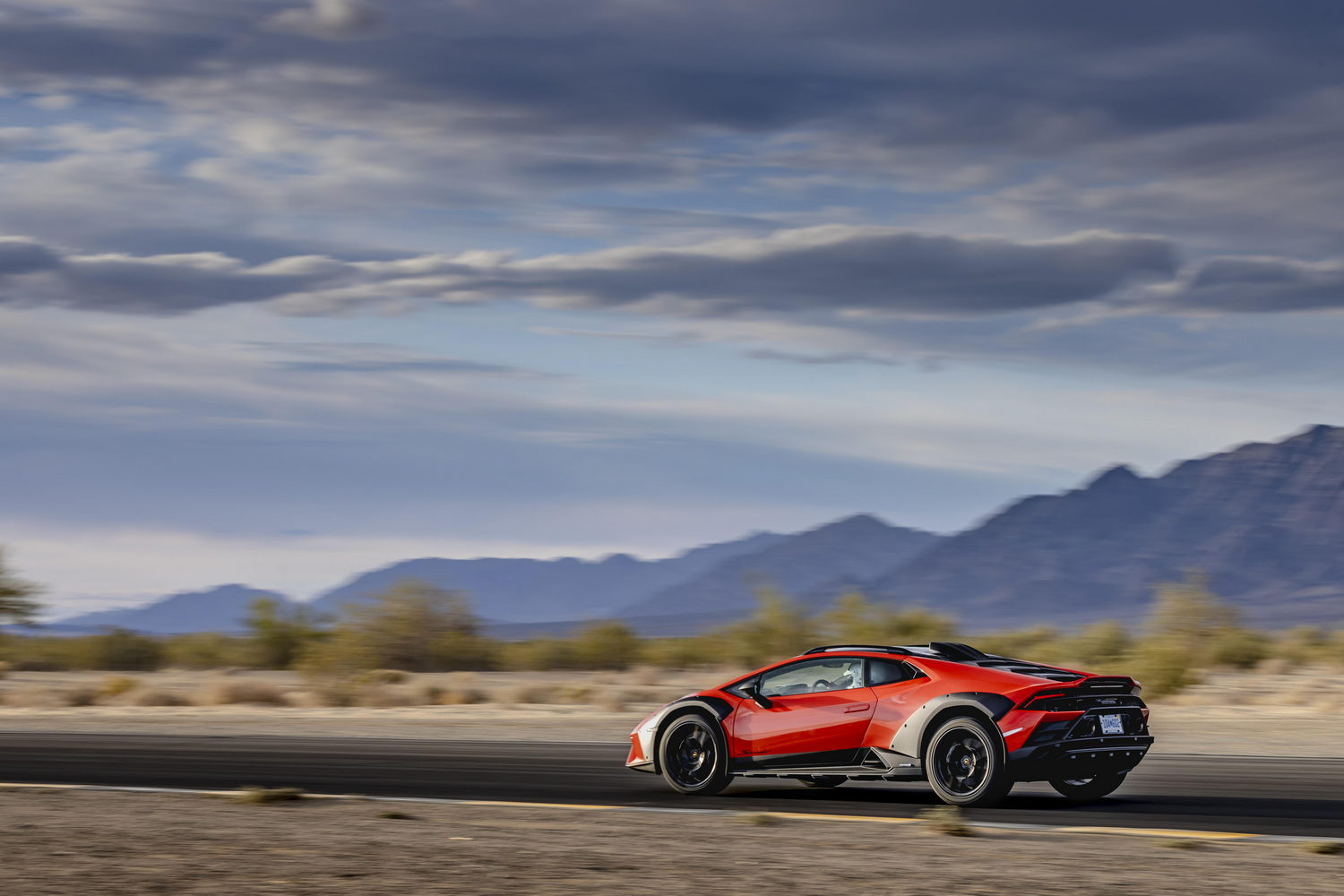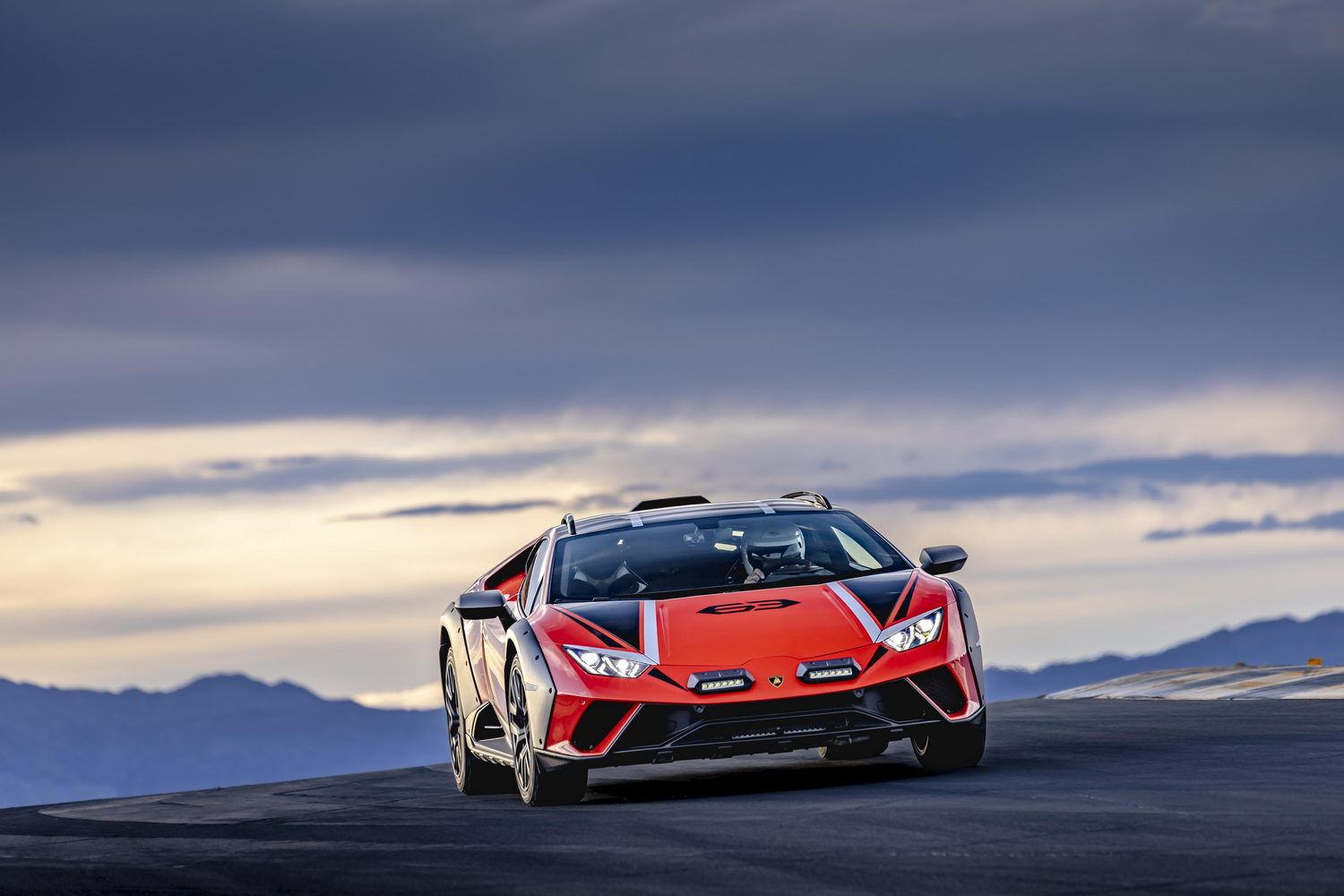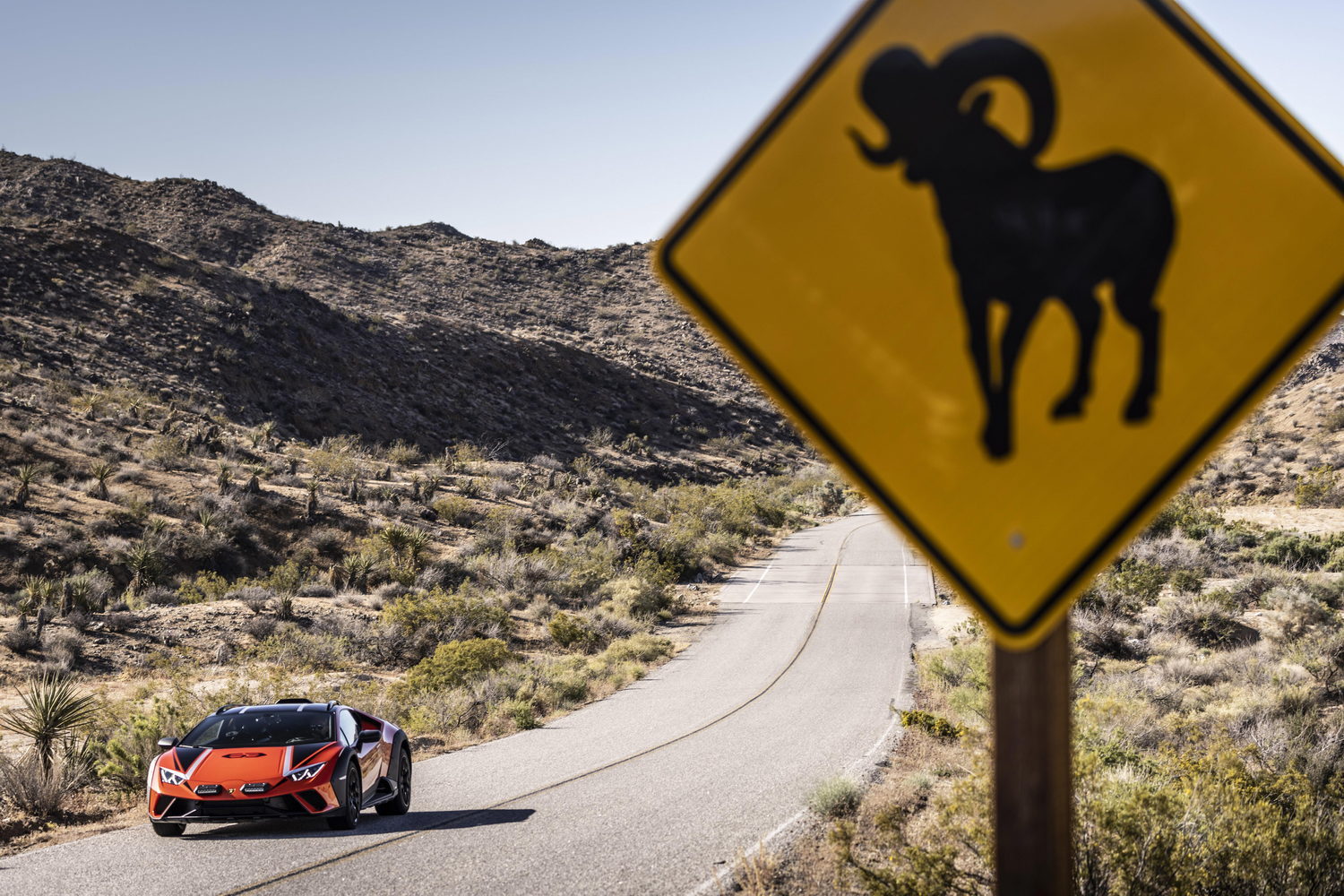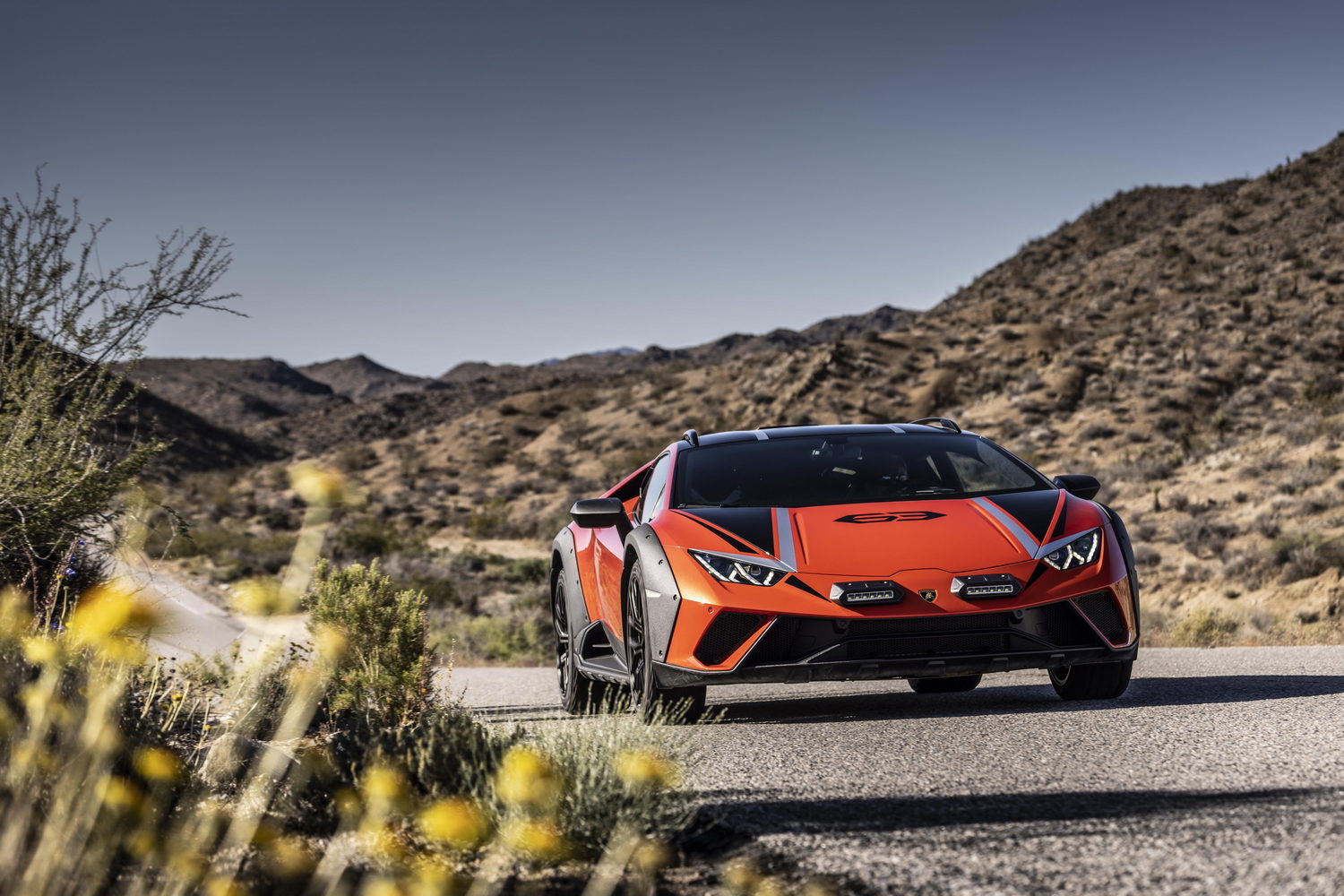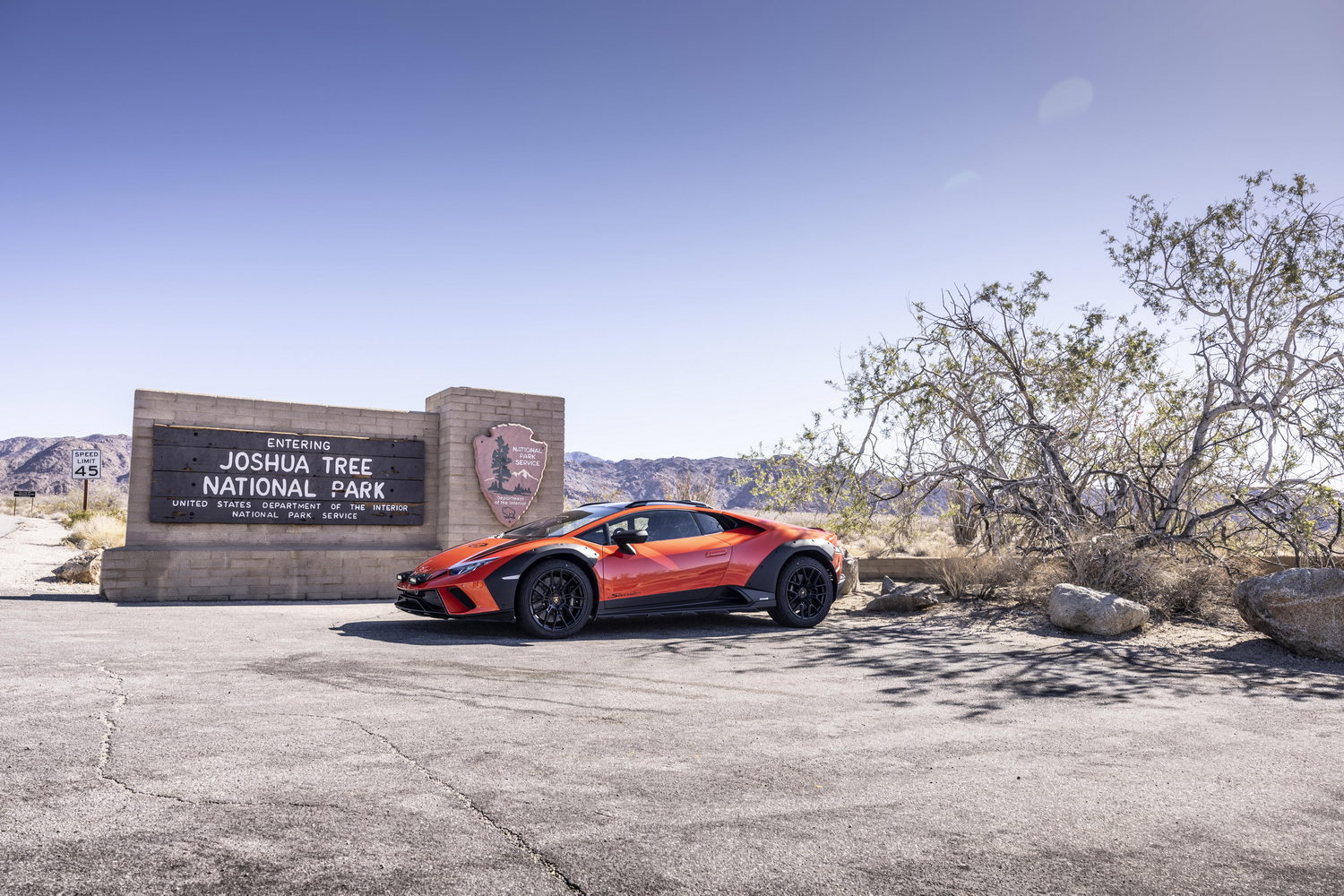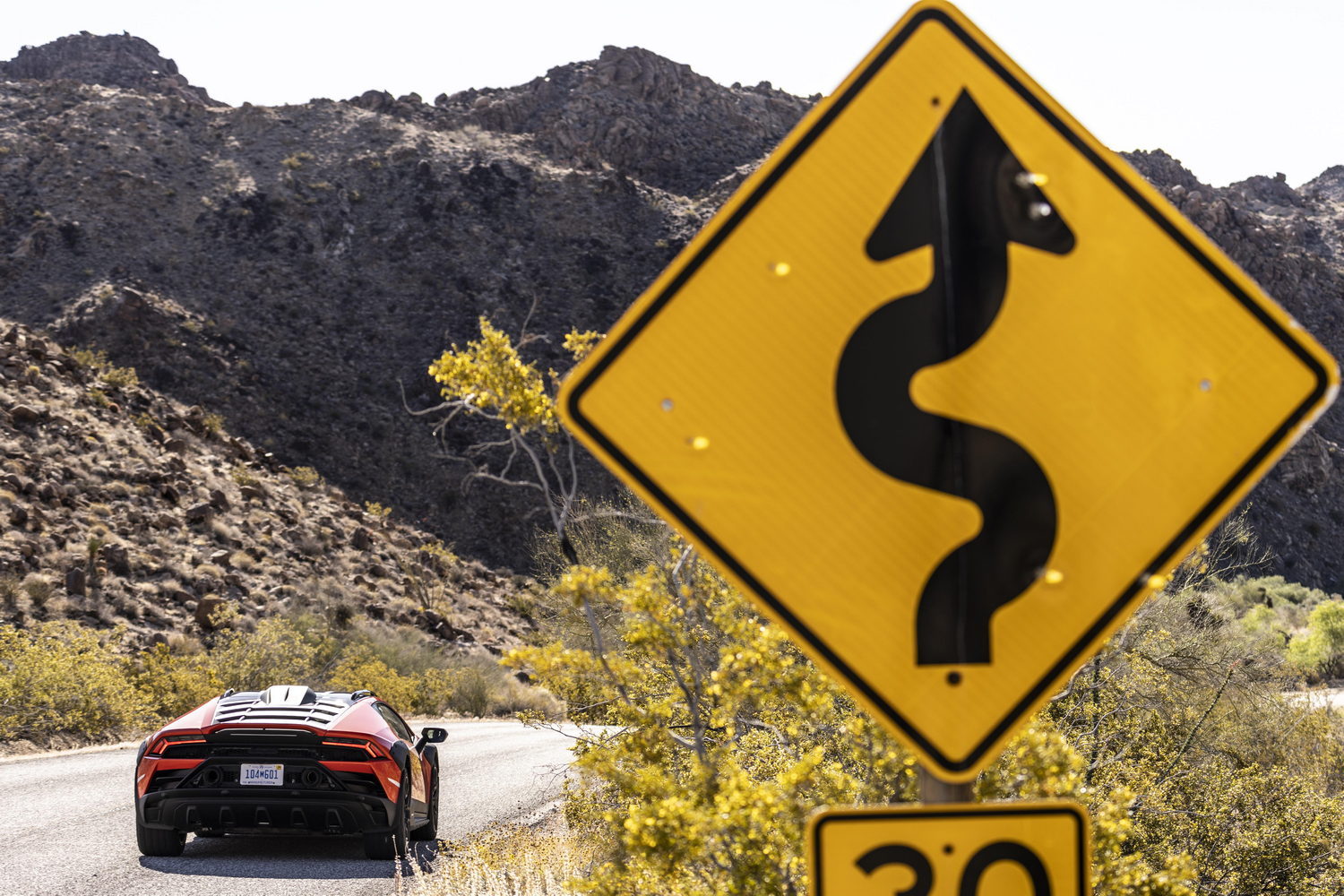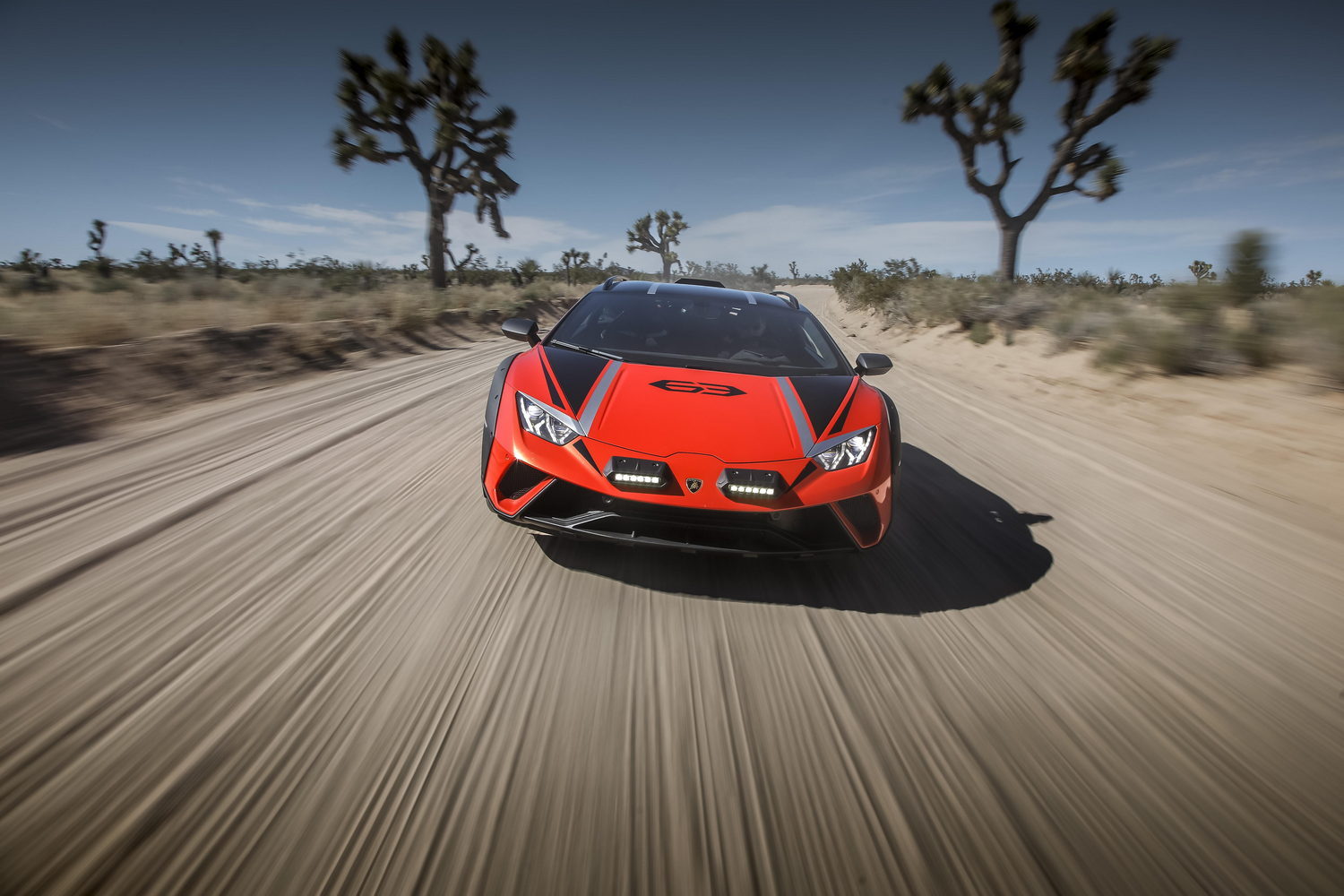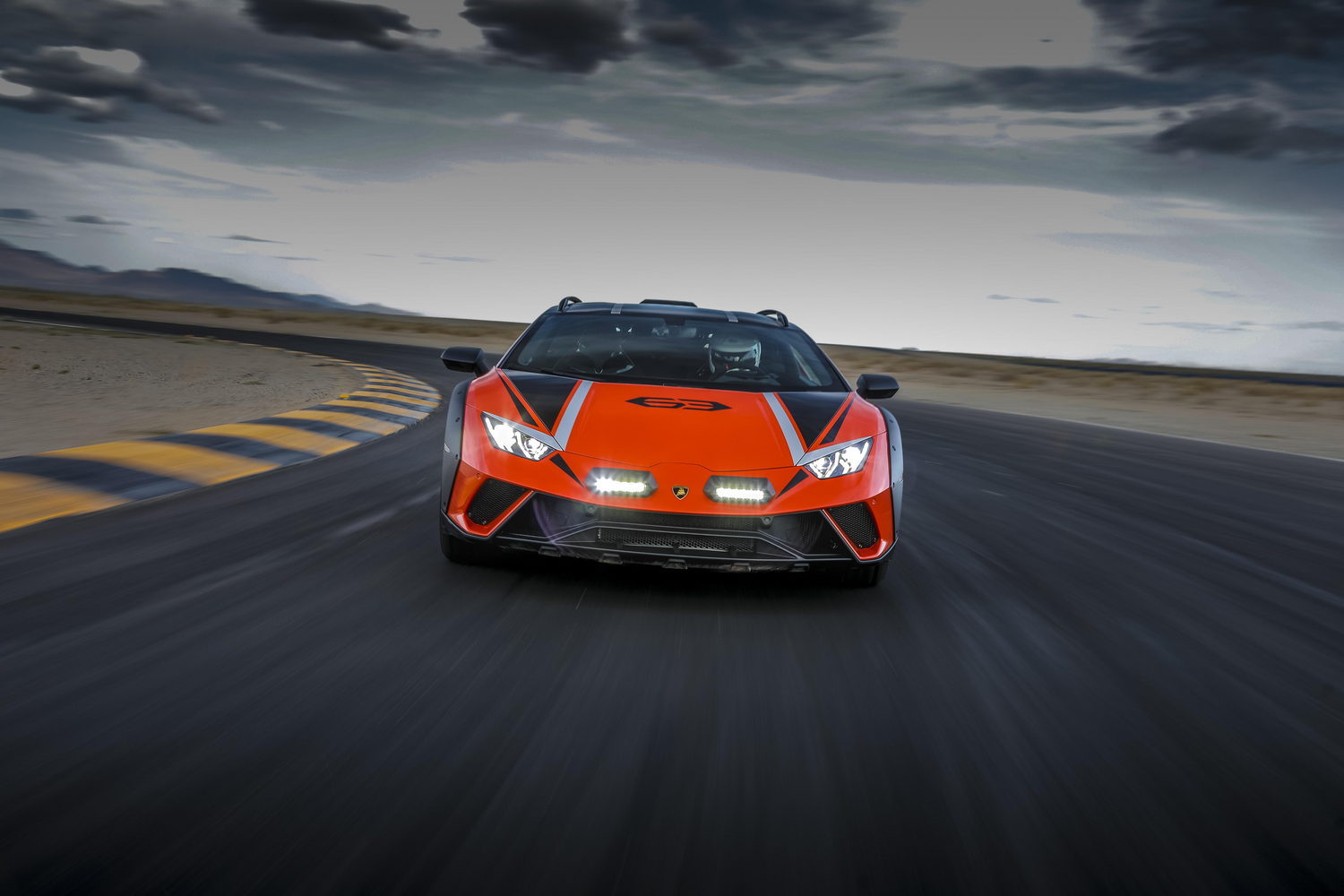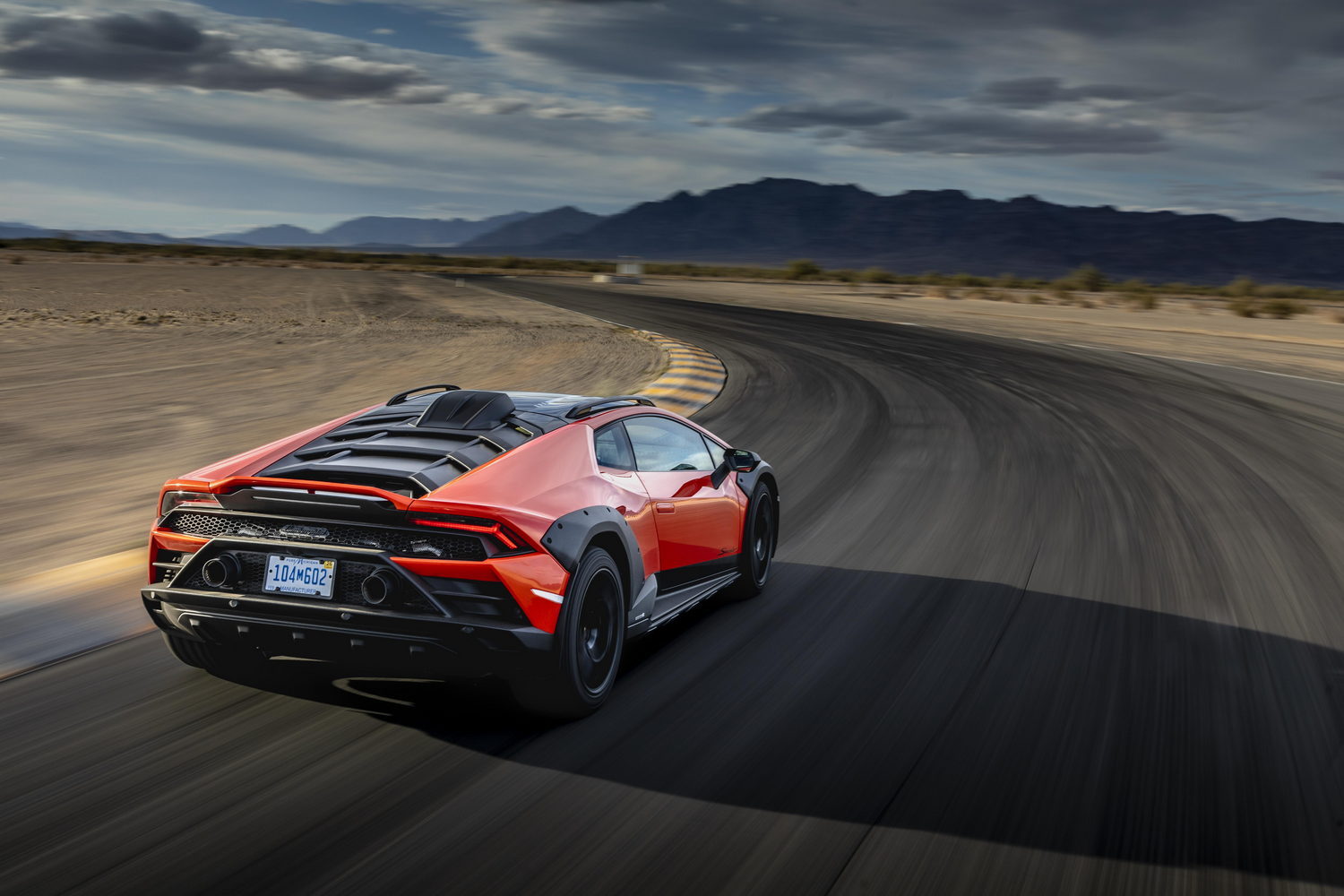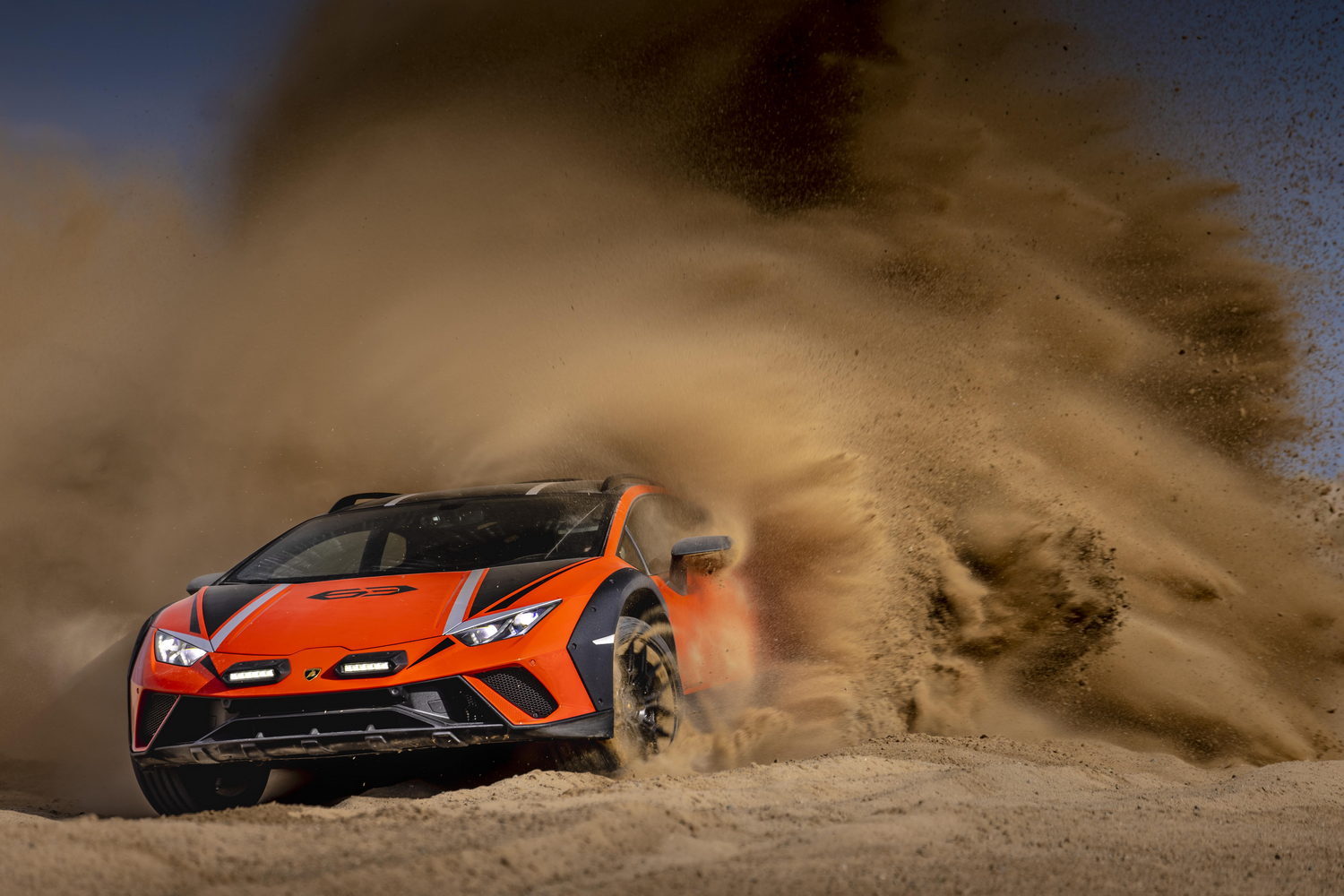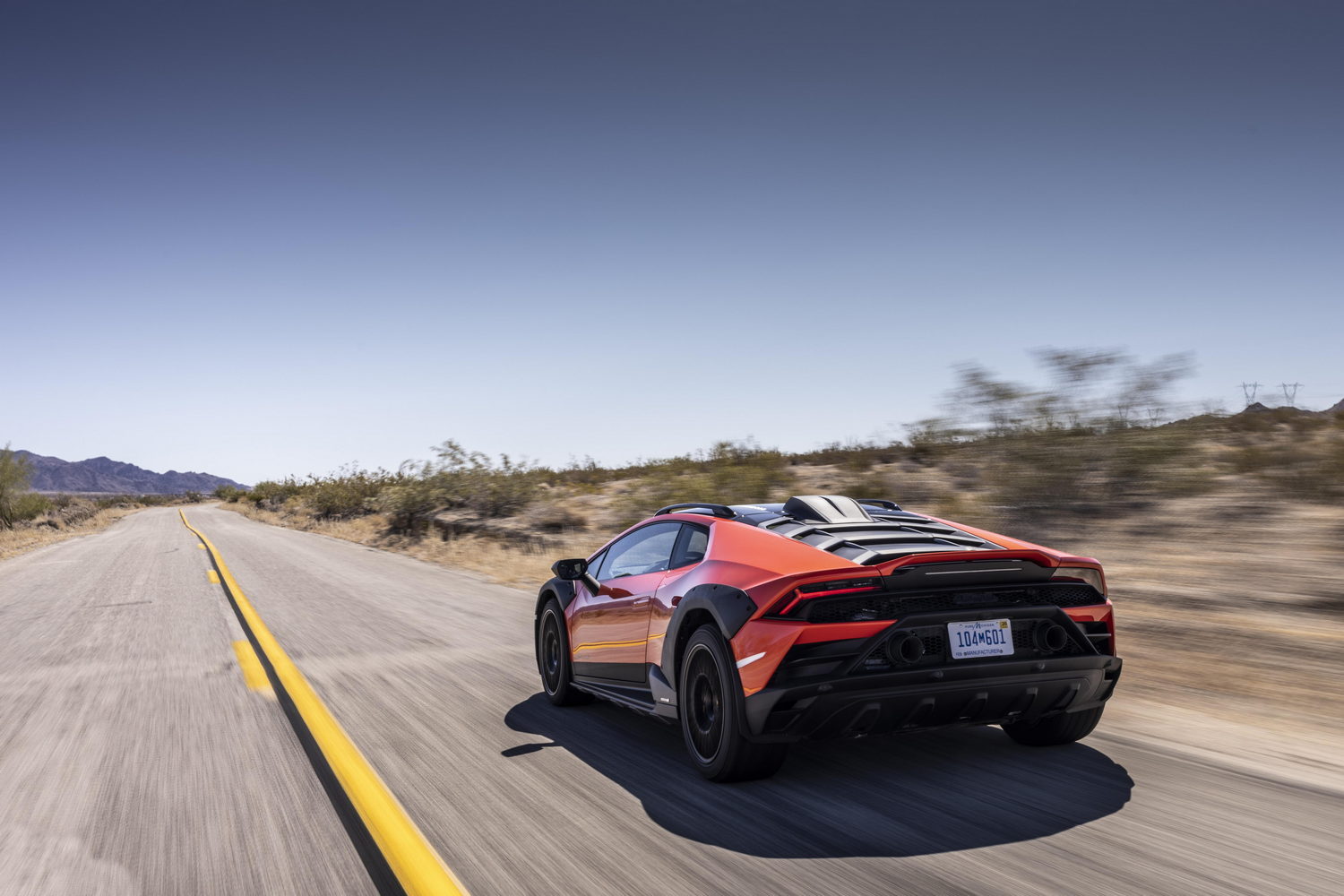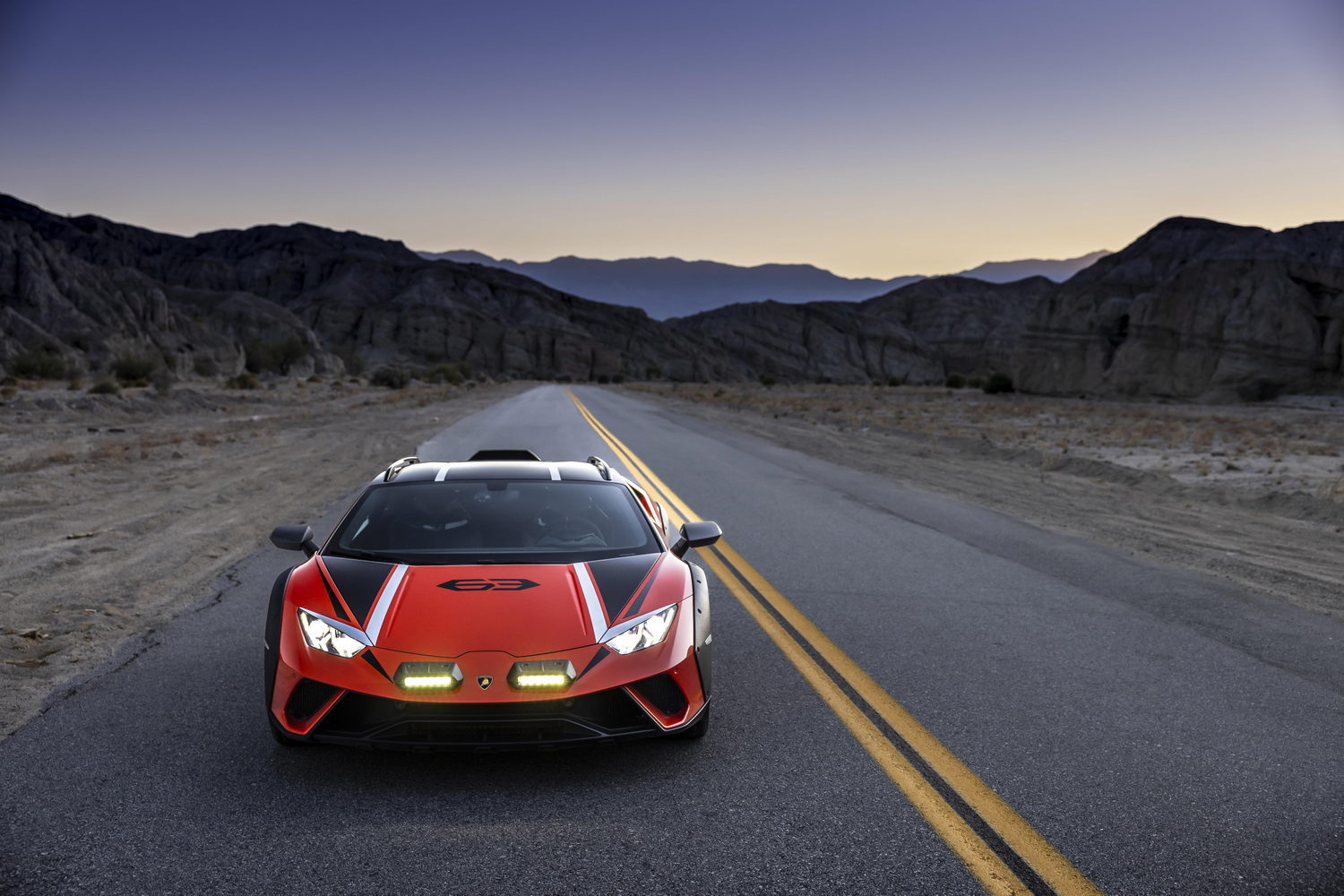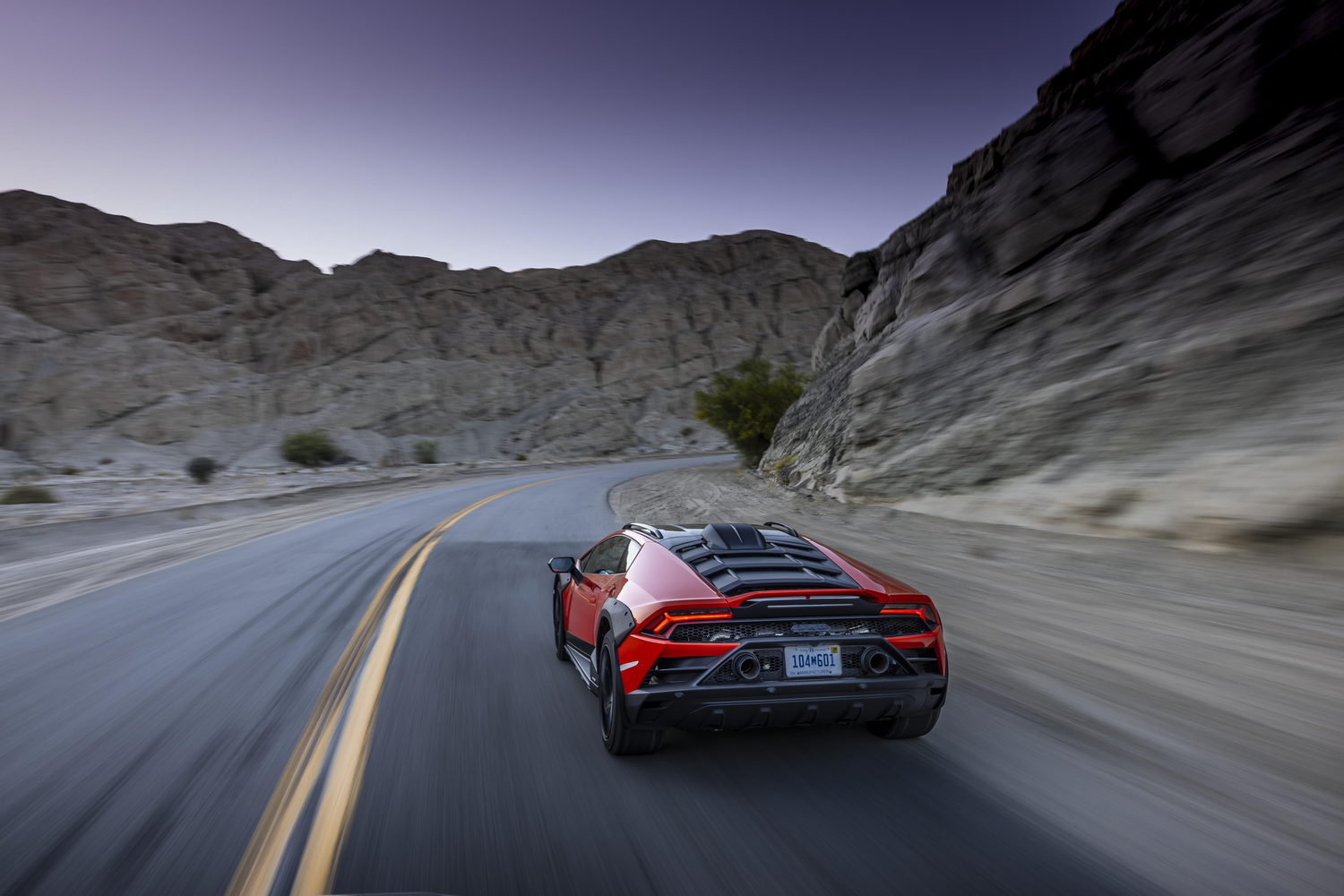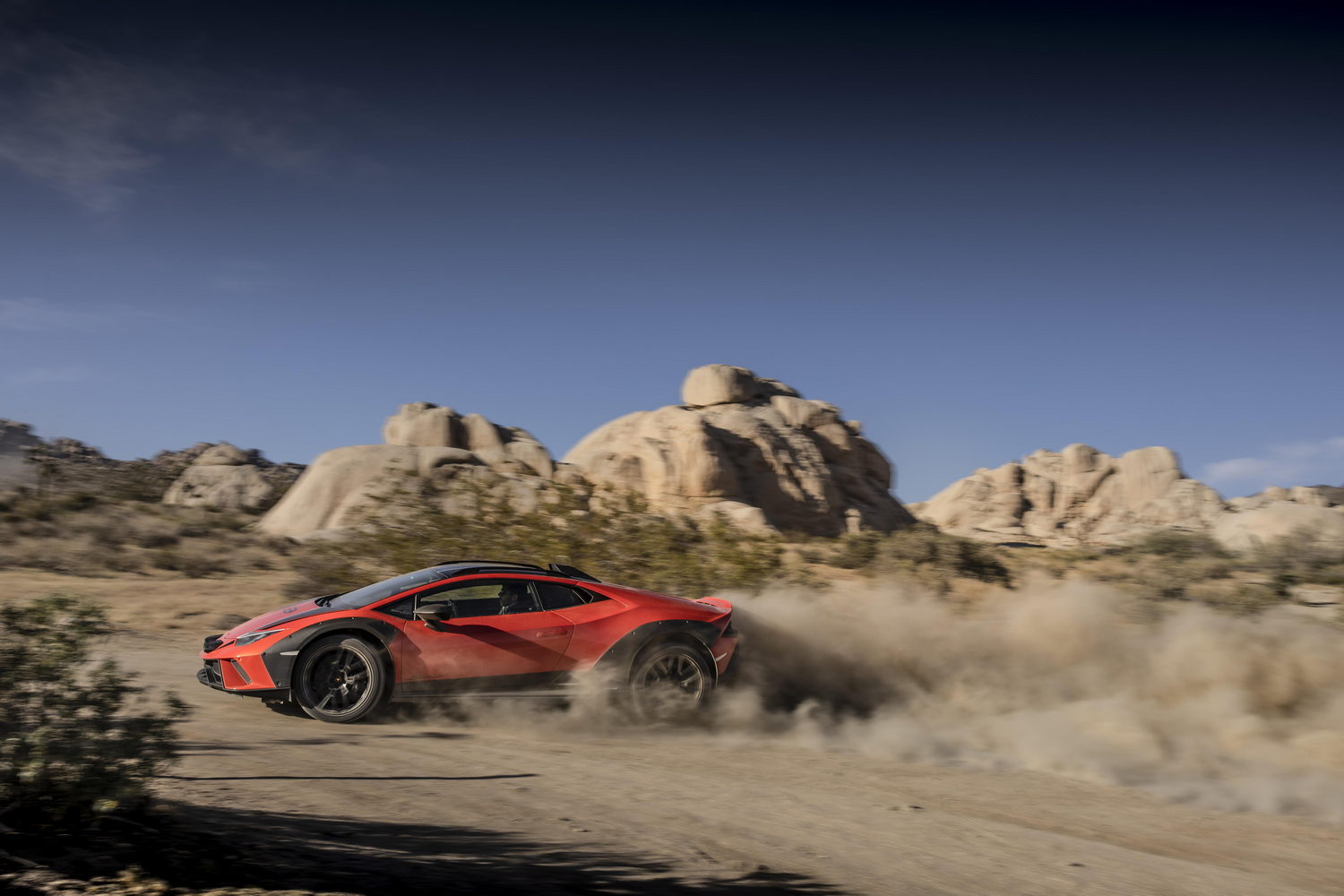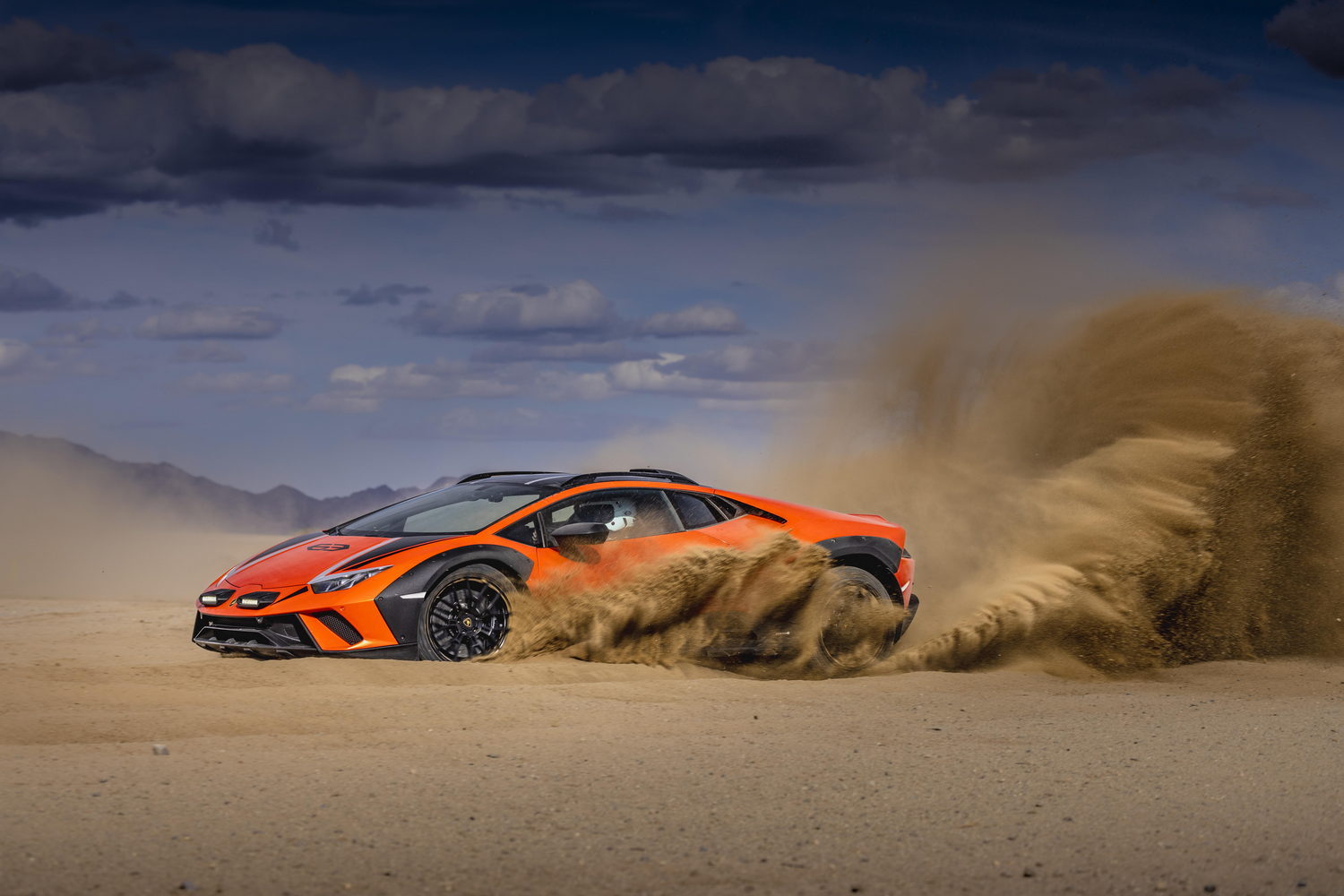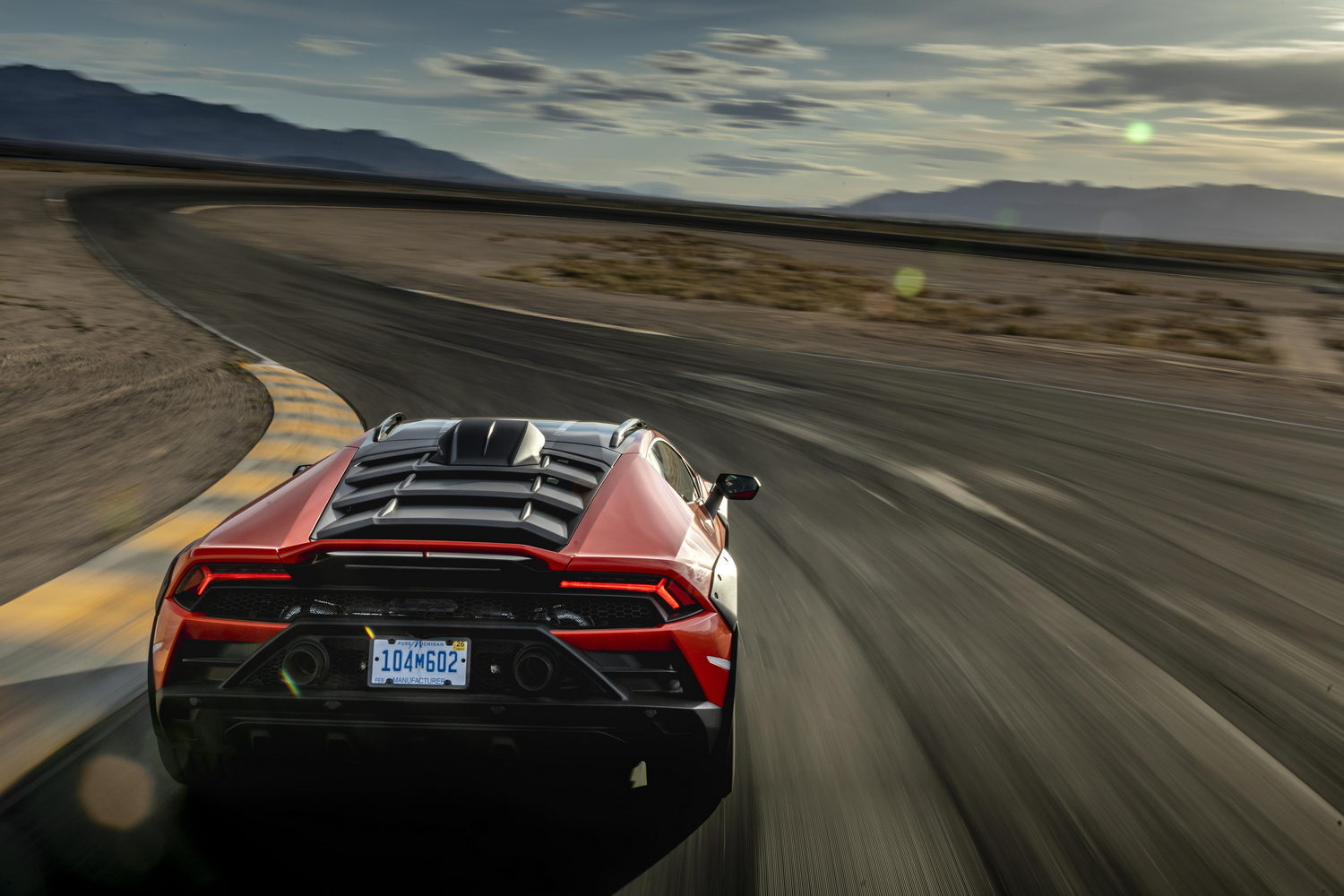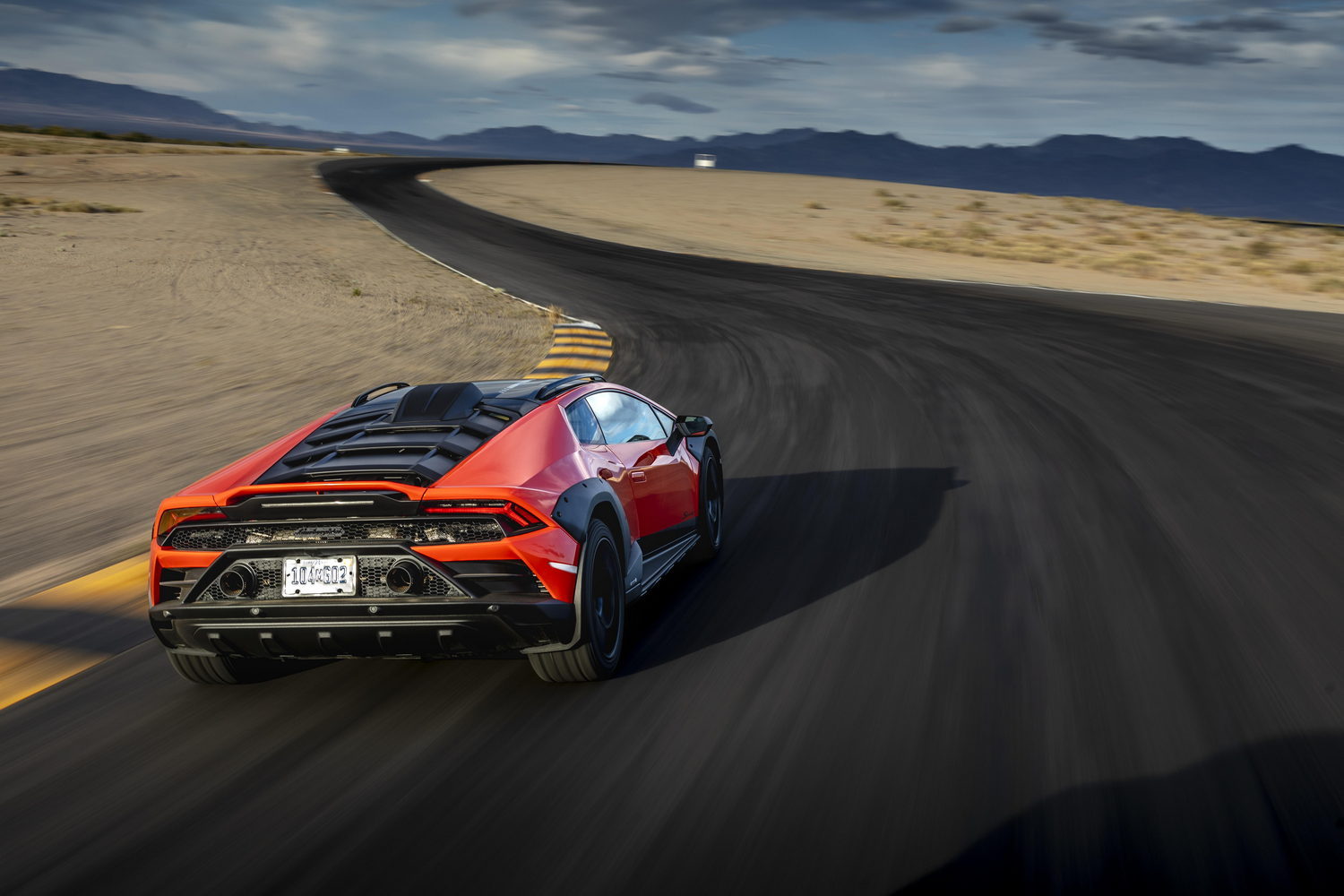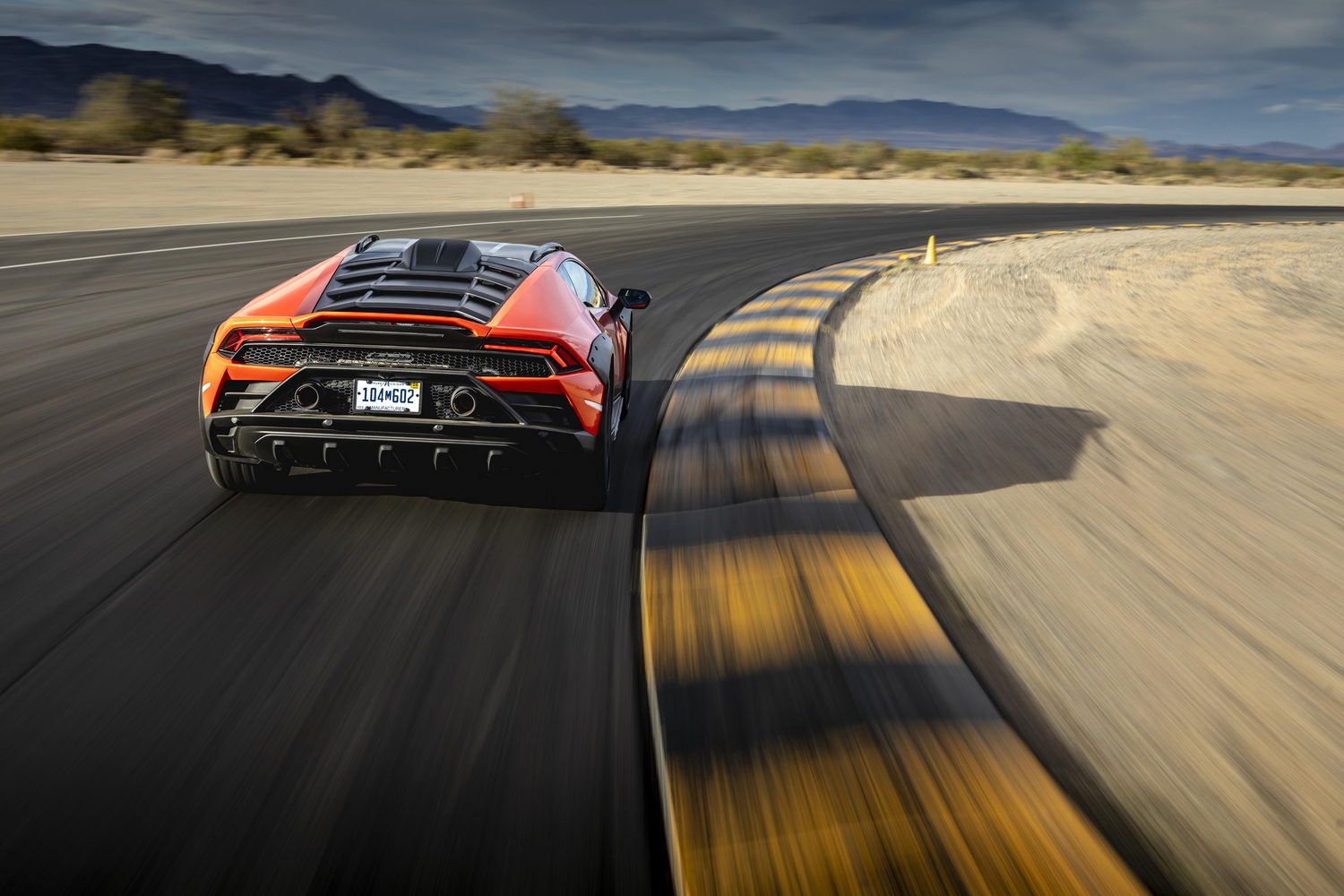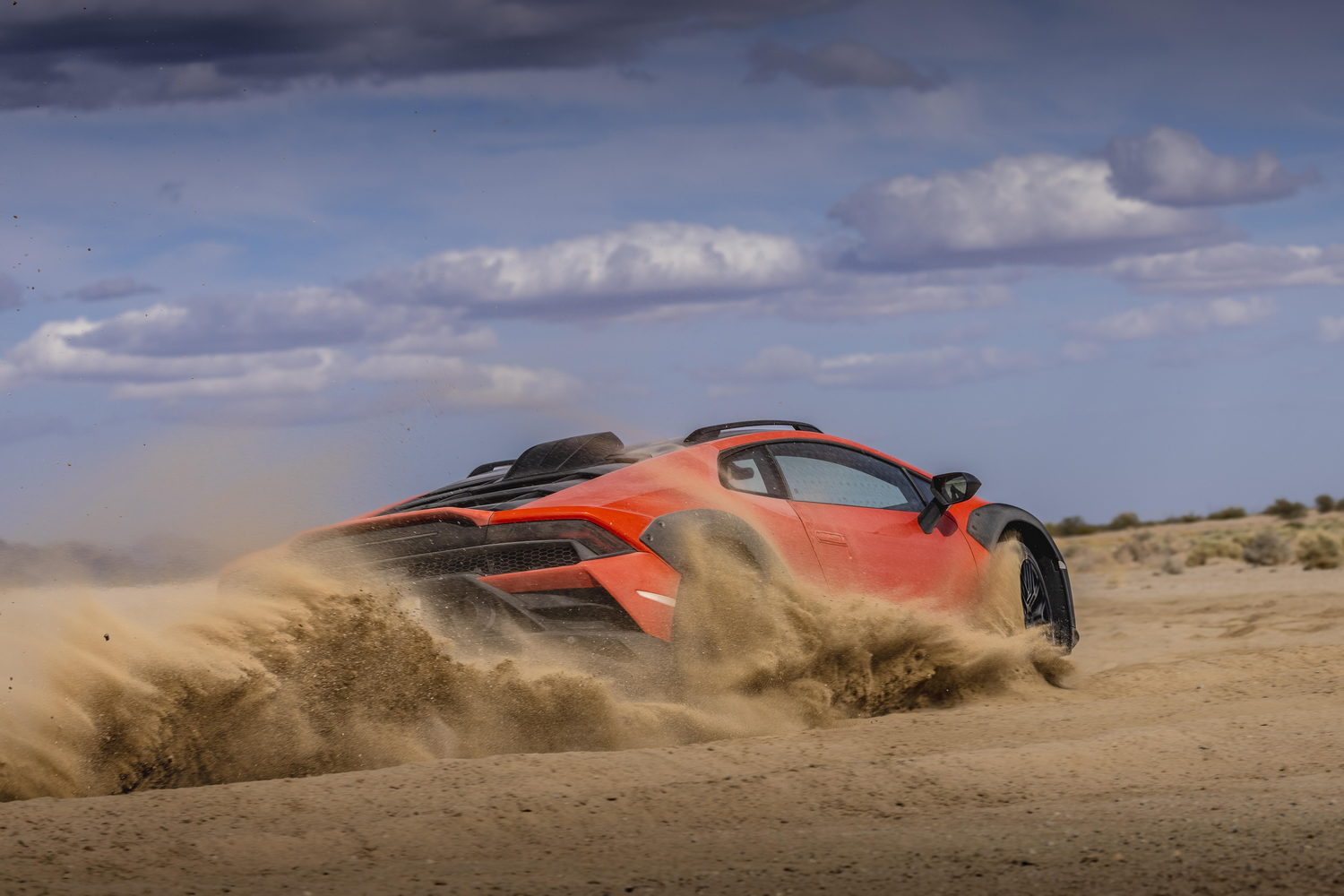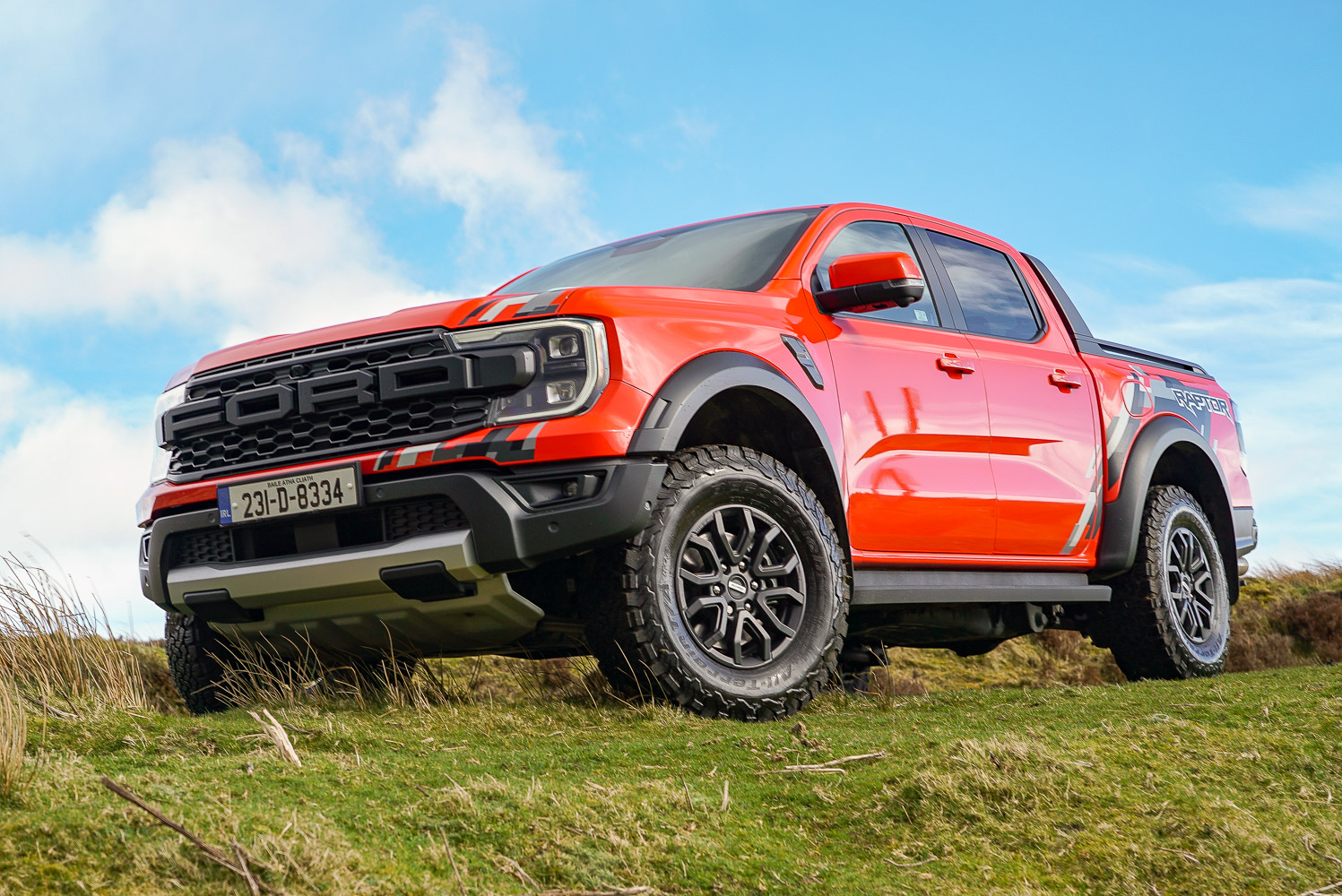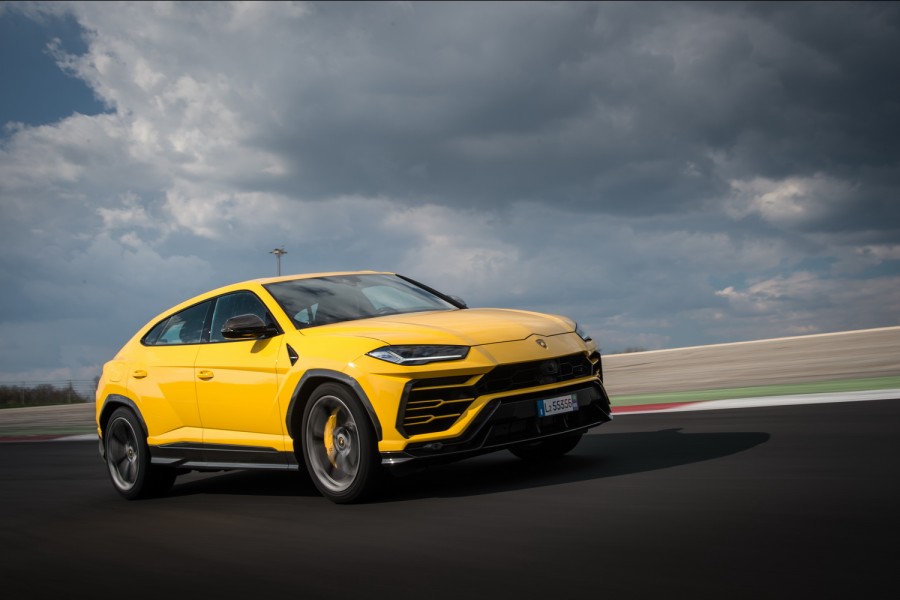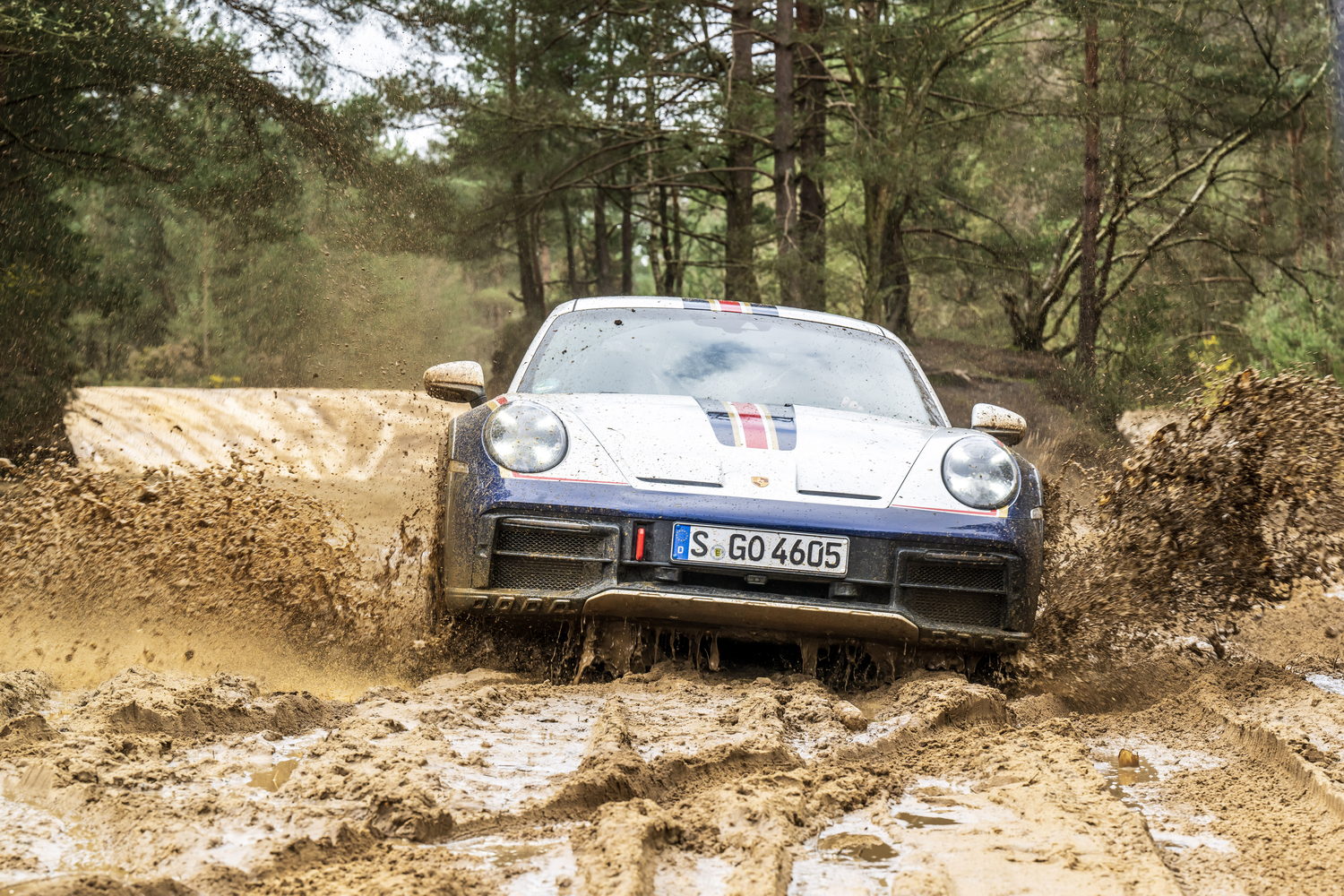With production of the Huracan set to end next year, Lamborghini is sending its V10 supercar out with a bang. And quite a few pops, too. To that end, the designers and engineers have been given the freedom to unleash the full extent of their lunacy, creating what looks like a prop from a Mad Max film. But it's actually the Huracan Sterrato, a beefed-up, all-terrain version of the Huracan supercar. But while it's definitely dramatic, is there really any point in owning such a thing?
In the metal
Sterrato is Italian for 'dirt road', and the beefier Huracan has been set up accordingly. The first thing to change was the suspension, with the Sterrato raised 44mm higher than the standard car. It isn't a huge amount, but it's the difference between scraping the nose on a rock and passing with room to spare, and it means there's more suspension travel for traversing rough ground.
All that has been joined by extra protection for the underbody, with an aluminium guard at the front and reinforced sills, as well as plastic body cladding around the arches. This has also allowed Lamborghini to move the front wheels 30mm further apart, while the rear wheels are 34mm further apart. There's also a central air scoop on the roof, although even Lamborghini places more emphasis on the styling implications to this addition than its usefulness in moving the intakes above water and dust.
Other off-road additions include the spotlights on the nose, which give the Sterrato even more of a rally-car look, and the roof rails, which allow you to fit the Huracan with a roof box. Yep, it's a Lamborghini supercar with a roof box. And a plastic panel over what would normally be the rear window. Quite why Lamborghini has done that, we aren't really sure, but we know it adds nothing at all to the styling and it means you can see absolutely nothing in the rear-view mirror. Although with the air intake on the roof, you wouldn't be able to see much through there anyway.
Lamborghini has made changes inside, too. The basic design is much the same, with a touchscreen low in the centre console and a digital instrument display, but Lamborghini has added to the displays with a new inclinometer that shows the car's pitch and roll while off-reading, and there's a compass and a geographic coordinate indicator, as well as a steering angle indicator. Will customers use any of this on any kind of regular basis? Probably not. Will they show it off to their friends and family? Absolutely.
After all, a Lamborghini is at least partly there for showing off, and the Sterrato's cabin offers plenty to help with that. Quite aside from the angular steering wheel hub, the ignition button under a cage and the Alcantara trim, it comes with the usual driving mode selector on the steering wheel, but there's a subtle difference. Whereas the toggle switch would normally allow the driver to flick between Strada (road), Sport and Corsa (track) modes, the Sterrato offers a choice of Strada, Sport and Rally settings.
The cabin feels as though it should stand up to the rigours of the light off-roading the Sterrato is designed for, too, because it's remarkably well built for an Italian sports car. Of course, the influence of Volkswagen ownership on Lamborghini has seen the cars become noticeably more solid, and the Sterrato is no more or less robust than any other Huracan, and its quality is still as high as ever. Every material feels great, every panel feels solidly joined to its neighbour and every switch feels substantial.
The cabin is remarkably spacious by the standards of Italian supercars, and fitting two tall adults in there won't be difficult. Headroom is more than adequate and there's enough space in which to stretch out. But you could never really call it practical. Aside from the fact you can't see out of the rear, there isn't much space for bits and bobs, and the shelf behind the seats might be fine for soft bags and the like, but it's hardly useful for smaller items. And while the 100-litre boot is useful, it's not especially capacious. Suitcases are right out, and shopping might get a bit warm if you have to go too far.
Driving it
Unsurprisingly, the transformation from supercar to rally car has made its mark on the Huracan's driving experience, but not always in the ways you might expect. For starters, it's more comfortable than other versions of the V10 Lamborghini, with the extra suspension travel allowing it to soak up imperfections in a way the standard Huracan EVO can only dream of. It isn't perfect - it's certainly no match for a luxury SUV - but it's a lot more compliant than your average supercar, and it's perfectly tolerable even on less-than-ideal surfaces. Better, in fact, than a good number of hot hatchbacks.
The raised suspension also allows the Sterrato to traverse the sort of bumps that normally strike fear into the heart of any supercar driver. Speed bumps are no great concern, and the idea of venturing off the road and into a car park or lay-by is no more frightening than it would be in a Volkswagen Golf. When you're driving on really uneven roads, therefore, the Sterrato is much more fun than a conventional Huracan, simply because there's no need to panic about the road ahead and the prospect of expensive noises coming from the underbody. But for all its Forza Horizon extras, it won't actually manage video-game off-roading. Sure, it's fine on a gravel track, but it's still a low-slung car, and even fairly normal ramps will scrape the nose if you aren't careful. It's much better on that front than the other Huracan models, but it's still some way short of being invincible.
But that's not to say it's a better car to drive, because on smoother surfaces or on a race track, the standard Huracan will win all day long. The difference is the tyres, which are chunky all-terrain items designed for scrabbling around on Italy's famous 'white roads' that are little more than gravel tracks. And the tyres are incredibly good at it, especially in conjunction with the Huracan's all-wheel-drive system that helps to maximise the traction available. However, unless there's a thick layer of snow or mud, they won't offer anything like as much traction on the road as the Michelin Pilot Sports fitted to other Huracans. That means you can get a bit of understeer when you tip it into corners, and the car 'washes out' as the front end fails to bite, but it also means you can get oversteer if you enter the corner more sensibly and exit with generous application of the accelerator. Again, it's good for rallying, but less helpful on the road.
Unless you're really pushing the Sterrato, of course, you won't notice any of that. What you will spot, however, is a woolliness to the steering that simply isn't present in other versions of the Huracan. It's all down to the tyres, which wobble and twist in a way that's completely alien to those of any other Lamborghini product, and that creates this rubbery play in the steering. Don't get us wrong - it's hardly a disaster - but at speed the Sterrato feels noticeably less precise than any other Huracan, and that's a bit disconcerting in such an expensive and powerful car.
And the Sterrato is certainly powerful. Like the Huracan that spawned it, it's propelled by a V10 petrol engine that does without turbocharging or anything like that and simply uses its 5.2-litre displacement to provide ample gusto. With all that heading to all four wheels via a seven-speed automatic gearbox, the Sterrato can lift its fortified skirts when it wants to. Although the gearbox logic and lack of turbos means it can feel almost sluggish (by Lamborghini standards) in Strada mode, switching to manual gear control or opting for Sport mode will unleash plenty of fury. So much, in fact, that 0-100km/h takes a mere 3.4 seconds, even with those all-terrain tyres on board. The 260km/h top speed is a little blunt for a supercar, we admit, but everything is relative and the Sterrato is still faster than most sports saloons.
Switching to Rally mode gives it even more savagery, really bringing the rear end into action through the corners. At first, the car fools you into thinking it's sliding, but that's just the sensation of the car floating on its tread blocks and sidewalls as the body motion tortures the tyres. Most people will have had enough by this point, but those that push through will access a rear end that's somewhat more wayward than that of the entry-level Huracan EVO. It isn't trying to kill you, but it will bite if you provoke it.
It'll get noisy, too. Lamborghini has put valves in the exhaust that open when you start working the engine, so at higher revs it gets really raucous. Ear-splittingly so, in fact. Even starting the engine will be enough to wake the neighbours, especially in Sport and Rally modes. But that's all part of the Sterrato's ridiculousness, and that's a key part of this car's appeal. In fact, it's a key part of Lamborghini's appeal.
What you get for your money
We highly doubt any Lamborghini buyers worry too much about costs, but then you don't get rich by throwing euros around like mucky confetti. Enough pontificating. There's no way to soften the blow, so we'll just come out with it: the Sterrato costs more than €250,000. And that's before the tax office has held out its hand like Oliver. And though you get plenty as standard, including the touchscreen, climate control and the Rally mode, you're still going to dip into the options list. Colours, upholstery options, extra kit - we'd be shocked to see anyone specify an entirely basic Sterrato. So let's say, in rough numbers, you're talking about close to €400,000 all told.
Summary
In some ways, the Sterrato is the most practical of the Huracan models - at least in the real world. Yes, the rear view is non-existent, but you don't worry about it in the same way you would a 'normal' Huracan, and that means it's more fun to drive on any given day. But it's also less immediate and less precise than a more conventional Huracan, and it's naturally less impressive on a race track or a good country road. And if you're willing to put up with that, the Sterrato simply isn't as practical as a Lamborghini Urus, which would arguably be the better choice. If we're really honest, though, none of that matters. For most customers, supercars are really about posing, and those who love the Sterrato's looks will be rushing to hand over their cash. And they'll probably love it.

